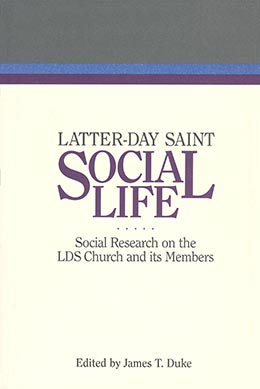The Consequential Dimension of Mormon Religiosity
Stan L. Albrecht
Stan L. Albrecht, “The Consequential Dimension of Mormon Religiosity,” in Latter-day Saint Social Life: Social Research on the LDS Church and its Members (Provo, UT: Religious Studies Center, Brigham Young University, 1998), 253–292.
Stan L. Albrecht is professor of health policy and epidemiology at the University of Florida in Gainesville, Florida. This article was originally published in BYU Studies 29:57–108; reprinted with permission.
Abstract
Does being a Latter-day Saint make any difference? What are the consequences of membership in the Church and living its standards? This essay, which was originally presented as the BYU Distinguished Faculty Lecture, presents a series of studies that demonstrate the consequences of religion in the lives of Latter-day Saints. The author first discusses the substantial growth in the membership of the LDS Church. While high commitment is common among Latter-day Saints, disengagement (or inactivity) from the Church is also common and occurs most frequently during the teens or early twenties. Most LDS people come back into activity, often in their middle twenties or thirties. Disaffiliation results among a small minority of Mormons who join a different church. The author discusses the influence of religiosity on Mormon family life, including the percent who marry, the percent of married persons who are divorced, and the number of children ever born. Finally, he considers the tendency of well-educated LDS people to be more religious than less-educated Mormons.
Often as I have walked past the east wall of the general reference section of the Lee Library during my years as an undergraduate student and then, later, as a member of the faculty, I have glanced up at the photos of members of the Brigham Young University community who have been selected to give prior Distinguished Faculty Lectures. I have always felt a deep sense of admiration for the contribution each has made to the university and a great personal appreciation for the impact that several have had on my own life. Tonight, I acknowledge again that impact as well as the sense of honor I feel to be included among them.
I will direct my remarks this evening to the general topic of the sociology of religion and, more particularly, the sociology of Mormon life. I begin with the guiding assumption that causal explanation is a hallmark of religion (Spilka, Shaver, and Kirkpatrick 1985), whether the event to be explained is, in Paul Davies’s words, one of the “deep questions of existence” or something that is more mundane (1983, p. vii). I quickly acknowledge that Davies’s deep questions of existence, such as life and its purposes and the origin and destiny of the universe, are addressed by religion primarily through revelation and received wisdom. At the same time, I will attempt to point out that many of the effects of religion on the more mundane questions of life can be addressed empirically through the collection and analysis of social-science data.
In sharing with you a body of such social-science data, my focus will be primarily on what I will call the consequential dimension of religion. I will set aside many of the important personal and spiritual aspects of religious belief and ask, more simply, what difference religious affiliation and practice make in other dimensions of our lives. At the same time, I will treat the consequences of religion a bit more broadly than is often done in that I will consider other religiously-related behaviors as relevant outcomes of religious identification and practice. In other words, in what follows, I will treat religion as both a dependent and an independent variable. My approach will clearly imply an important value decision on my part: I begin with the conviction that religious belief and practice can and should be positive forces in our own lives and desirable ends or outcomes for society more generally.
While beginning with the question, “Does religion make any difference?” I will further focus most of my remarks on the more specific, “Does being a Latter-day Saint make any difference?” Are we different because of our religious heritage and practice, or have we become, as someone suggested many years ago, not so much a peculiar people as a rather common people characterized by a peculiar history? One who has studied Mormonism over the last three decades has observed that “with worldly opportunity has come worldly achievement, which has in turn brought worldly respectability; and respectability is always a problem for a ‘peculiar people’” (Mauss 1972, p. 8). To address this broad issue, I will focus on three areas: religious disengagement and disaffiliation, religion and family life, and religion and education.
Interest in the study of religion has a very long, though sometimes mixed, history in the social sciences. In my own field, three of the most important early founders of the discipline, Emile Durkheim, Max Weber, and Karl Marx, focused extensively on the impact of religion on society. Students from a variety of backgrounds can readily identify Durkheim’s important empirical work on the origins of religion, Weber’s substantial contributions on the relationship between the development of Protestant religious beliefs and the emergence of capitalist economic systems, and Marx’s scathing criticisms of the churches as supporters of the oppressive status quo. Marx’s definition of religion as “the sigh of the oppressed creature, the sentiment of a heartless world, and the soul of soulless conditions” still describes the approach taken toward religion by many of his twentieth-century followers (1972, p. 12; cited in Nelson 1988, p. 123).
Subdisciplines focusing on religious phenomena in both sociology and psychology began to develop before the turn of the last century, and though interest among social scientists in the empirical study of religion has passed through several cycles of increasing and decreasing intensity, there has accumulated a substantial record of research on such issues as the functional nature of religious belief systems, the dimensions of religiosity, and the religious conversion process (Thomas and Henry 1988). Research on these and related questions now appears with some regularity in the better journals of both disciplines.
With such developments, we are now in the midst of what is being called the most exciting decades since at least the early 1900s in terms of the quantity and quality of research and theory on the social science of religion (Demereth and Roof 1976; Thomas and Henry 1988). The findings I will describe are direct products of that period of revival. I am pleased that we have finally reached this point, particularly as it applies to our own faith, because while substantial treatises have been written on a wide variety of historical topics having to do with Mormonism, very little has been done until this period on the broad topic of our sociology. I underline the significant fact that many of the most important contemporary contributions are being made by faculty members at this university. I will draw upon the work of several of these colleagues in this essay.
Disengagement and Disaffiliation
Over the past several years, there has been a dramatic increase in the number of studies designed to help us better understand the processes through which people become less involved religiously. Let me try to set the stage for what follows by starting with some national comparisons.
The involvement of Americans with religion presents the researcher with some interesting paradoxes. For example, the overwhelming majority of Americans—95 percent—say they believe in God; four-fifths report that they feel close to God; most believe in life after death, and, of those who believe in the concept of heaven, fully two-thirds believe they have an excellent or good chance of going there. At the same time, there is a very clear lack of depth in the religious experience of most Americans. While virtually every home in this country has at least one Bible, biblical illiteracy is very widespread, and fewer than “half of adult Americans can name the person who delivered the Sermon on the Mount or more than four of the Ten Commandments” (Vander Zanden 1988, p. 394).
| Table 8.1: The American Religious Landscape | |
| Percent of Americans who: | |
| 1. State of religious preference | 92% |
| 2. Claim formal church membership | 69% |
| 3. Are actually recorded as church members | 59% |
| 4. Say religion is very important in their lives | 55% |
| 5. Attend religious services in a typical week | 40% |
Source: Gallup, Religion in America, 1987.
At the present time, about 92 percent of the population of this country state a specific religious preference, though a significantly smaller percentage actually claim formal church membership, are recorded as Church members, or engage in regular religious worship. Most of that small minority who report no religious preference were members of a church at some time earlier in their lives. A significant number of the 92 percent who are church affiliates, however, do not identify with the church of their birth. Approximately 40 percent of all American Protestants indicate a denominational preference different from that in which they were raised (Hadaway 1980, pp. 262–68), though switching is much less common among other groups such as Catholics and Jews. While switching denominational affiliation for many Protestants often involves simply “changing brands” for convenience, rather than actively seeking a religious faith that would more adequately express their personal religious commitment (Hadaway 1980, p. 451), for some who leave the church of their birth, the change obviously involves a more meaningful conversion experience or a more dramatic loss of personal belief.
| Table 8.2: Religious “Switchers” in America | ||
| % of current members not raised in that denomination | % of those raised in a denomination who have “switched” out. | |
| Protestant | 40 | 27 |
| Catholic | 18 | 8 |
| Jewish | 18 | 6 |
| Other | 25 | 48 |
Source: Frank Newport, “The Religious Switcher in the United States,” American Sociological Review, 1979 (August): 528–52.
All across the American religious landscape, then, are those who were at one time members of a given church but who have now left that church to join another or, less frequently, have given up their religious identity altogether. Based on a variety of data sources, we can now conclude that there is clear and pervasive movement both into and out of virtually all religious orders (Bahr and Albrecht, 1989). New, rapid growth religious movements often experience apostasy at a rate that closely parallels their rate of conversion of new members, and, while the patterns may differ significantly in older, more established religious orders, change is still a regular and common occurrence (Wright 1988).
(TABLE 8.3: The Growth Record of the LDS Church)
| Year | Number of Members | Rate of Increase | |
| 1830 | 280 | ||
| 1840 | 16,865 | 5,923% | |
| 1850 | 51,839 | 207% | |
| 1860 | 61,082 | 18% | |
| 1870 | 90,130 | 48% | |
| 1880 | 133,628 | 48% | |
| 1890 | 188,263 | 41% | |
| 1900 | 283,765 | 51% | |
| 1910 | 398,479 | 40% | |
| 1920 | 525,987 | 32% | |
| 1930 | 670,017 | 27% | |
| 1940 | 862,664 | 29% | |
| 1950 | 1,111,314 | 29% | |
| 1960 | 1,693,180 | 52% | |
| 1970 | 2,930,810 | 73% | |
| 1980 | 4,644,768 | 58% | |
| 1985* | 5,910,496* | 54%* | |
| *Adjusted for 1990 percentage. Assuming present growth rate. | |||
| Projections: | Year | Estimate | Estimated Rate |
| 2080 | 63,415,000 | 30% per decade | |
| 2080 | 265,259,000 | 50% per decade | |
Source: Stark, 1984 and LDS Church Almanac, 1987.
As Latter-day Saints, we are clearly affected by these same forces though, by all counts, the Church has a tremendous net advantage when one examines the phenomena of religious conversion/ disaffection (Albrecht and Bahr 1983). Before I focus on individuals who have lost their faith or who have discontinued their organizational affiliation, let me begin by putting that discussion into a broader perspective. Non-Mormon sociologist Rodney Stark recently introduced his analysis of Mormon growth patterns by stating:
I shall give my reasons for believing that it is possible today to study that incredibly rare event: the rise of a new world religion. I shall attempt to demonstrate that the Church of Jesus Christ of Latter-day Saints, the Mormons, will soon achieve a worldwide following comparable to that of Islam, Buddhism, Christianity, Hinduism, and the other dominant world faiths. (1984, p. 18)
Table 8.4: The Growth Record of the LDS Church
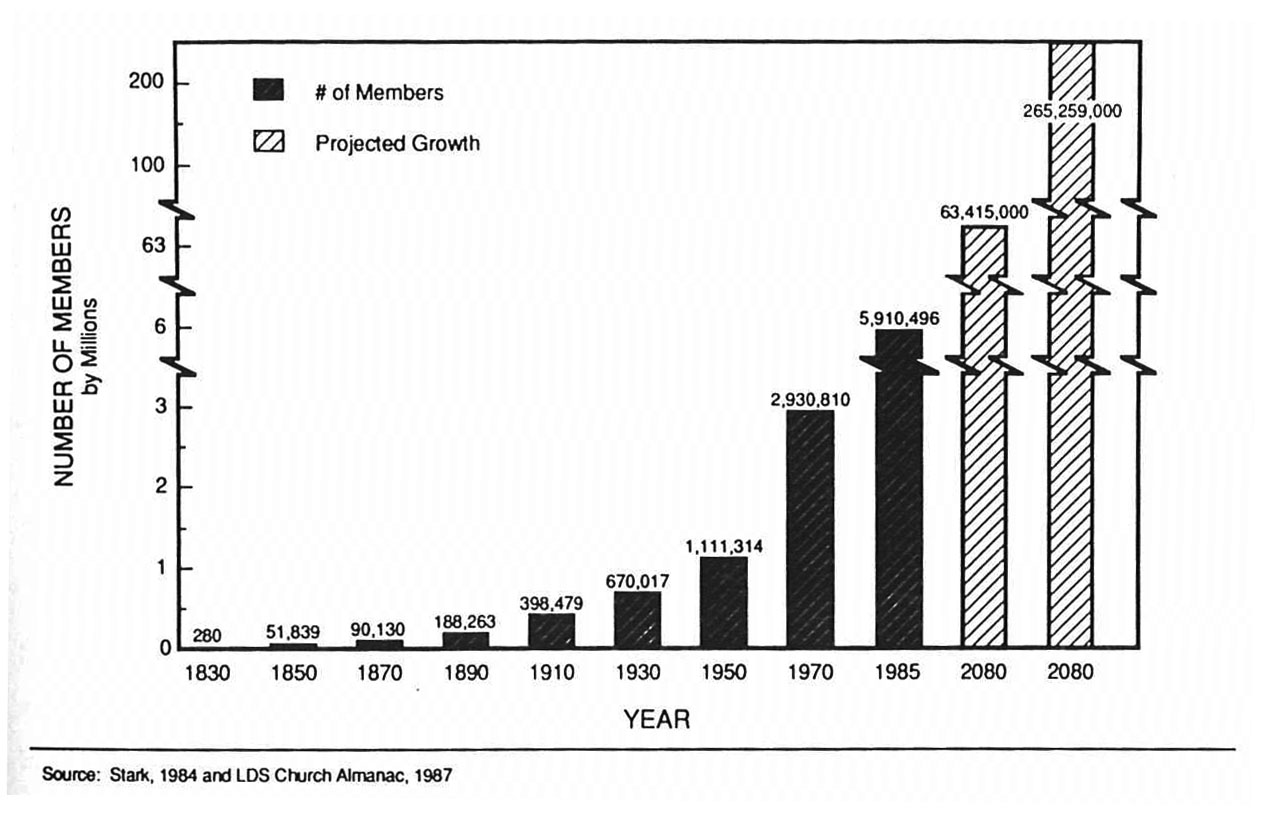
Stark observes further that “Indeed, today, [the Mormons] stand on the threshold of becoming the first major faith to appear on earth since the Prophet Mohammed rode out of the desert” (1984, p. 19). What is it about the Church that leads one not of our faith to make such seemingly outrageous statements? Let me show you by using some of Stark’s tables that I have corrected and updated slightly from the time of his analysis.
It is the rate of growth that so startles Stark and leads him to conclude that if growth in the next century is comparable to that of the past, Mormonism will truly become a major world faith. A projected 30 percent growth rate per decade will result in over 60 million Mormons by the year 2080. A 50 percent per decade growth rate, which is actually lower than the rate each decade since World War II, will result in over 265 million members of the Church by 2080. Of course such straight-line projections are very risky because they assume that the future will be much like the past. But, as Stark notes, “it would be wise to keep in mind that back in 1880 scholars would have ridiculed anyone who used a straight-line projection to predict that the 160,000 Mormons of that year would number more than 5 million a century hence. But that is now history” (1984, pp. 23–24).
Stark’s view is reinforced by a brief examination of other indicators of growth such as the increase in the numbers of wards and stakes. It is also reinforced by an examination of growth patterns in several selected areas of the world. In some areas the rate of growth is over 100 percent for the last half-decade, and in Central America it has been over 600 percent (see tables 8.5, 8.6, and 8.7). Projections for the future are even more startling, as tables 8.8, 8.9, and 8.10 illustrate.
Table 8.5: Building the Kingdom: Ward and Branch Growth
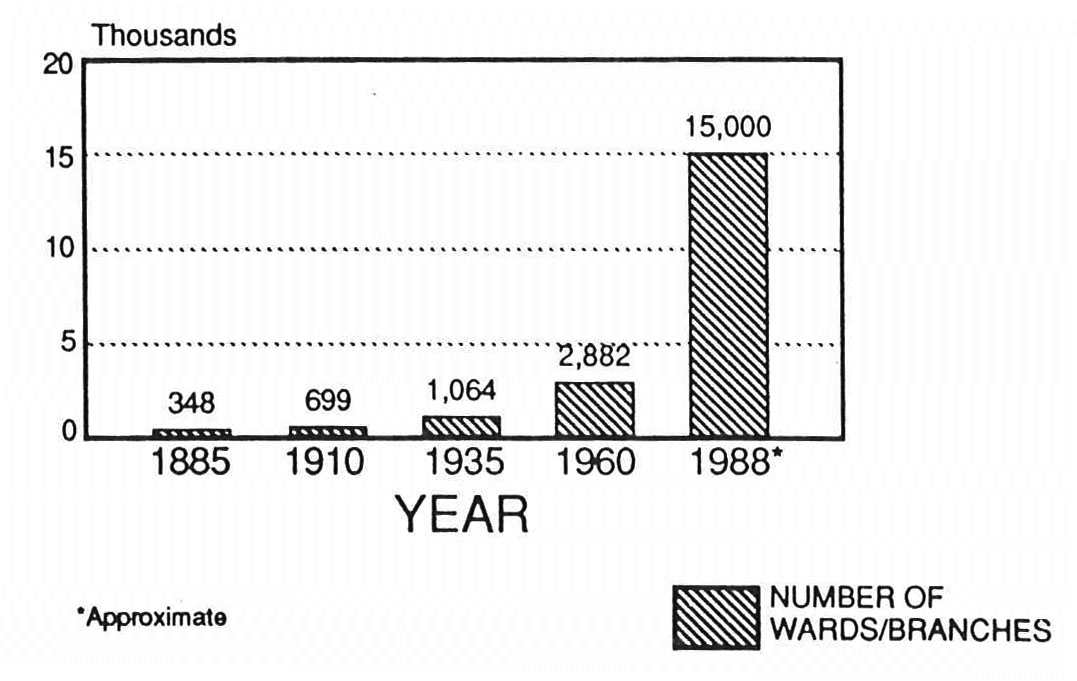
Table 8.6: Building the Kingdom: Stake Growth
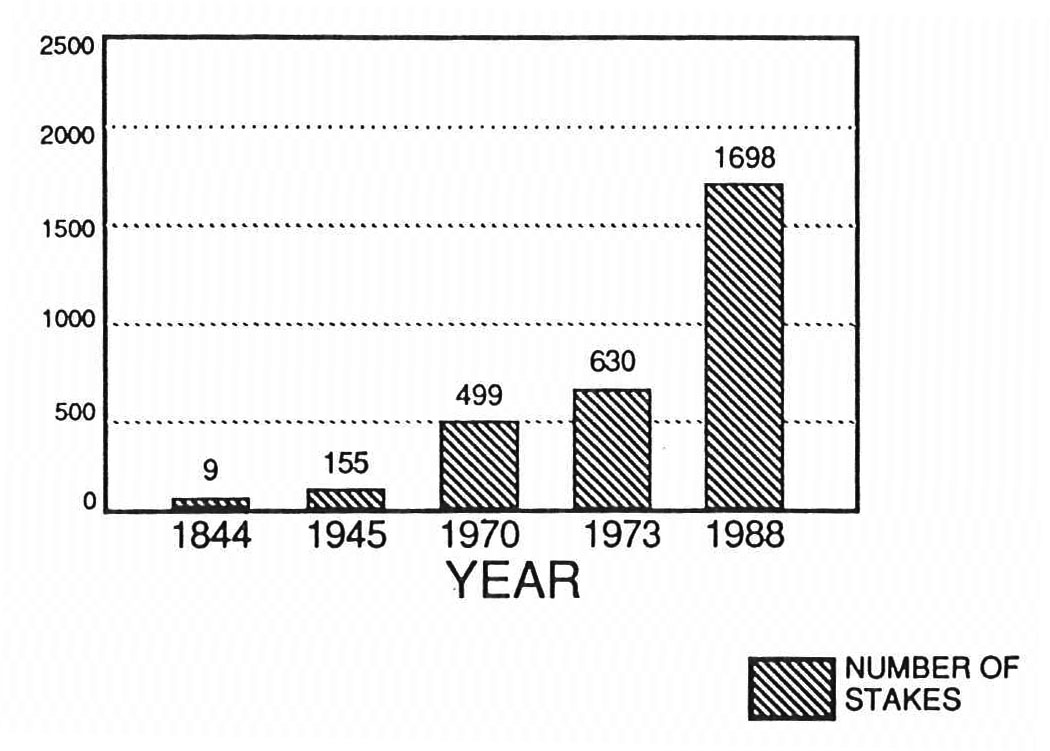
Other sociologists of religion have talked about the growth of the Church in similar terms. For example, in their analysis of national survey data, Roof and Hadaway calculate what they call “net gains” for a number of American religious faiths. These net gains are obtained by subtracting annual losses from annual gains in membership. They report a 36 percent net gain for Mormons, a rate significantly higher than that for any other group included in their analysis (1979). The overall picture presented by these non-Mormon sociologists is one of continuing, rapid growth. Yet there are obviously some associated with the Church whose mobility is out- rather than in-ward.
| Table 8.7: Five Years of LDS Membership Growth by Area | |||
| Area | 1980 | 1985 | % of growth in 5 years |
| South Pacific | 135,952 | 205,499 | 51% |
| Asia | 139,523 | 258,766 | 85% |
| Europe | 99,994 | 249,328 | 149% |
| Central America | 51,701 | 390,410 | 655% |
| South America | 368,064 | 783,400 | 113% |
| World Wide | 4,644,768 | 5,910,496 | 27% |
Source: LDS Church Almanac, 1987.
TABLE 8.8: Building the Kingdom: Philippines Membership
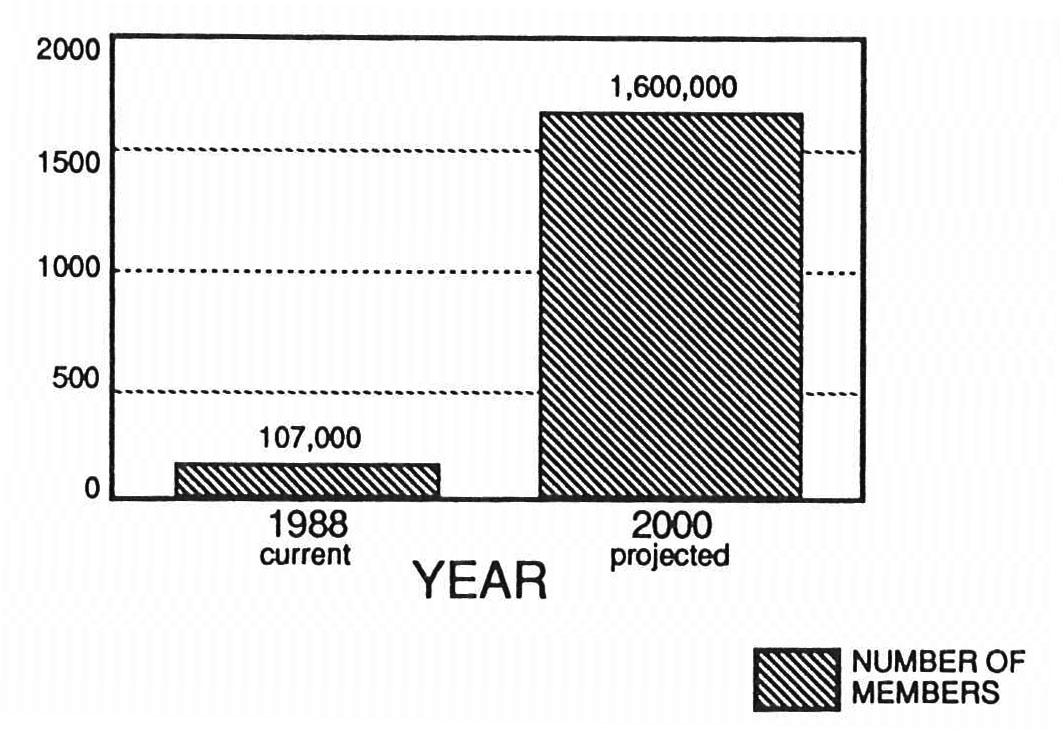
Table 8.9: Building the Kingdom: Colombia Membership
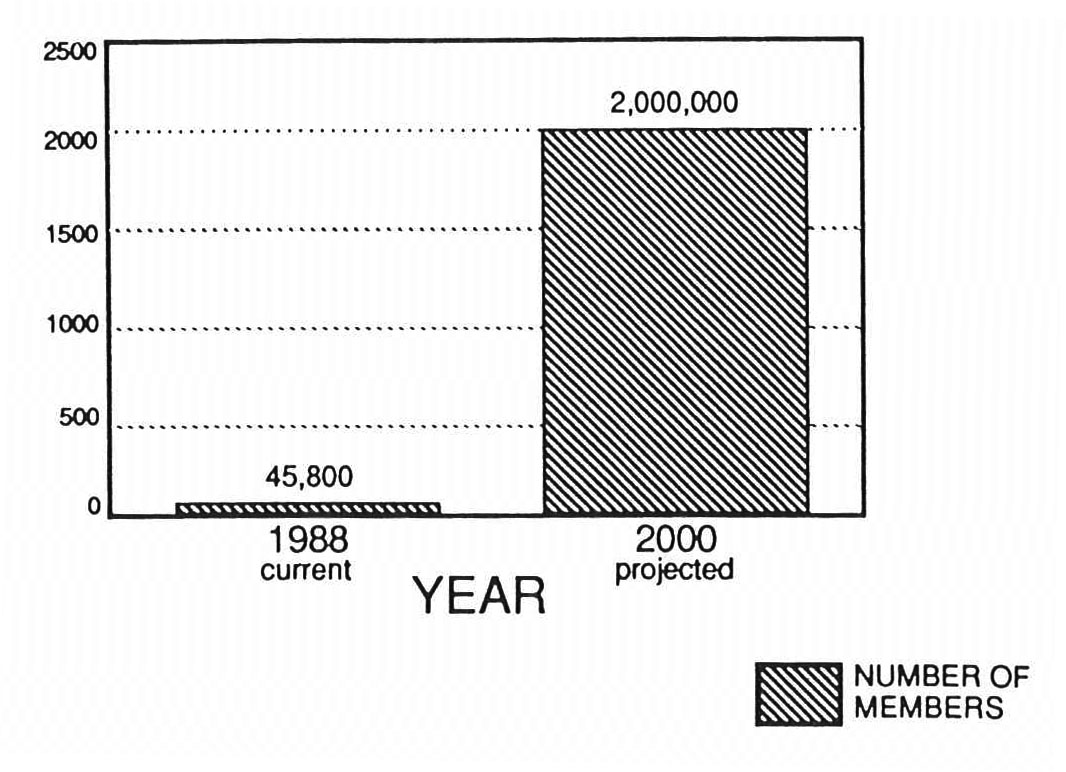
Table 8.10: Building the Kingdom: Southern Africa Membership
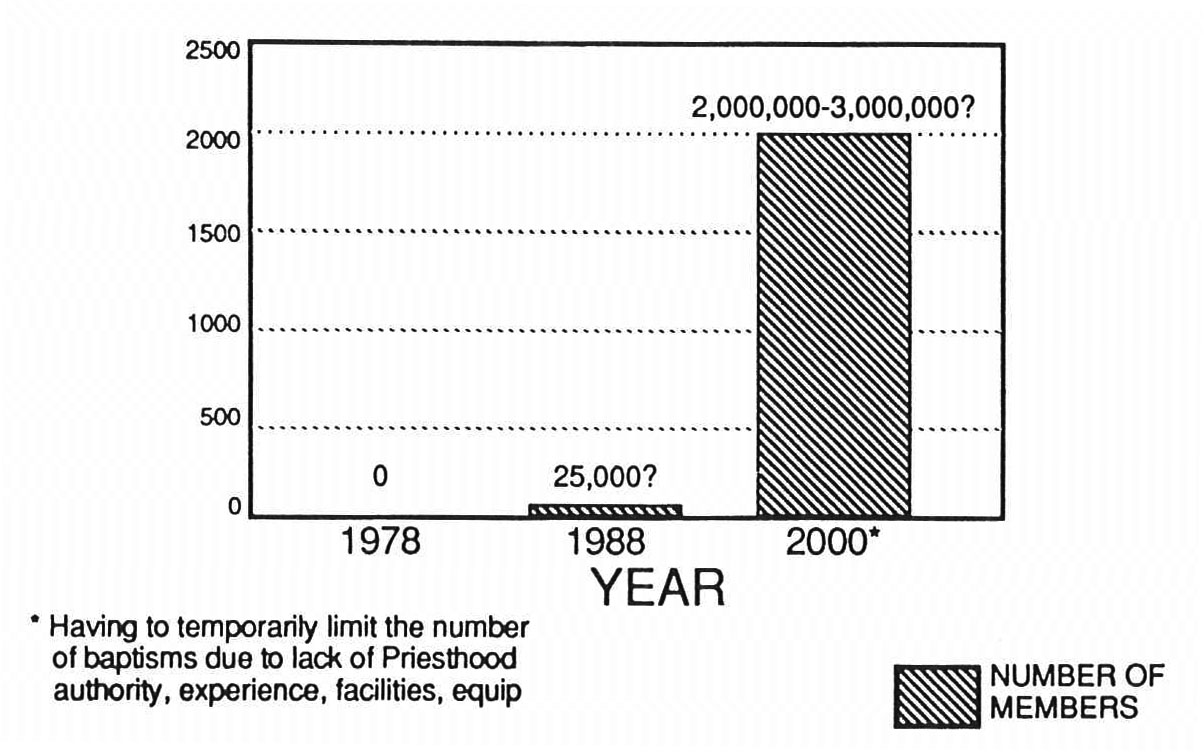
There are a number of different ways to conceptualize patterns of religious change. In a recent study, Marie Cornwall, Perry Cunningham, and I distinguish between religious disengagement and religious disaffiliation (1988). We treat disengagement as the process by which individuals who retain an organizational identification discontinue active participation in their religious community for a period. This disengagement can occur at either the attitudinal or the behavioral level, or both. A majority of the adult members of the Church in the United States who do not attend worship services regularly would be classified as disengaged, since their names still appear on the rolls of the Church and their personal religious identity is clearly Mormon. However, for at least a period, either their beliefs or their involvement in the religious community will have wavered. A smaller number will move beyond disengagement to disaffiliation, as I will note in a few moments (see tables 8.11 and 8.12).
Table 8.11: Proportion of Adult Members Who Have a Period of Inactivity before Age 65
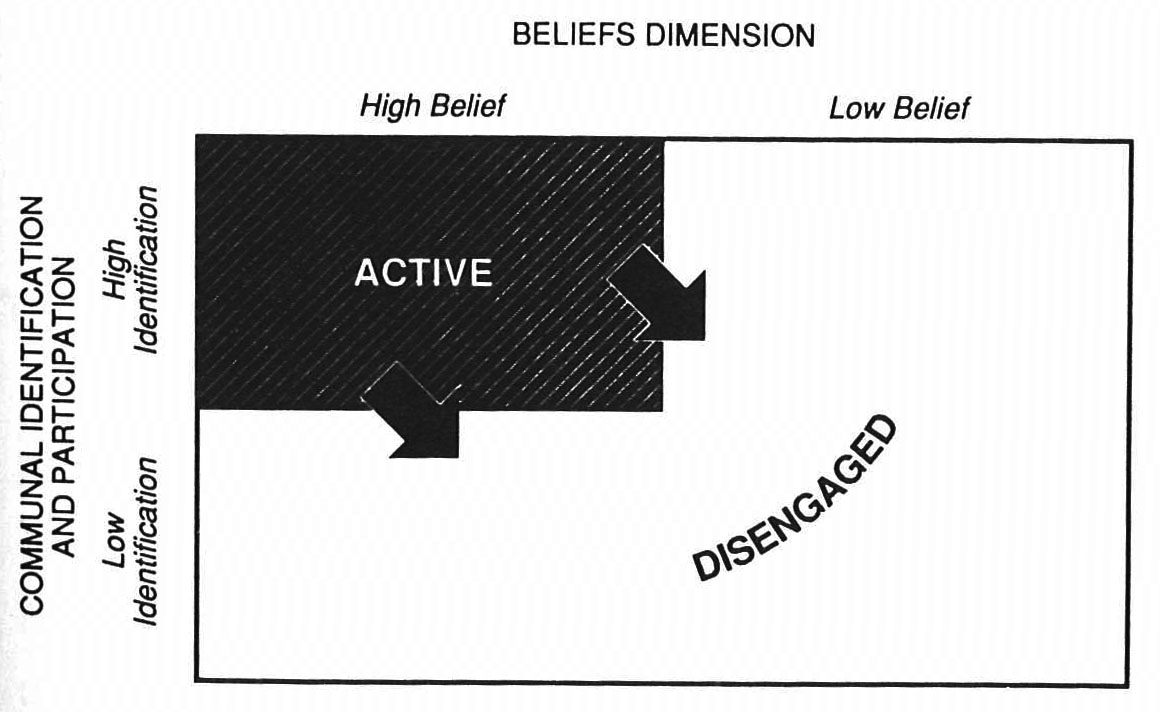
Most frequently, the period of disengagement occurs during the teens or early twenties. The period of greatest risk is between the ages of sixteen and twenty-five. Patterns for men and women are a little different with the period extending a bit longer for men (from fifteen to twenty-eight) than for women (from seventeen to twenty-five). The pattern is obviously different for converts. Their period of greatest risk is during the first five years following baptism (see tables 8.13, 8.14, 8.15, and 8.16).
A clear majority of those who leave come back. Using life tables, we can project that by age sixty-five, approximately two-thirds will be active, scoring high on both the belief and the communal identification dimensions. While some of these will have always been active, others will have moved back into activity following a period of weakened belief or communal identification (see tables 8.17 and 8.18).
Table 8.12: Disengagement of Adult Members before age 65
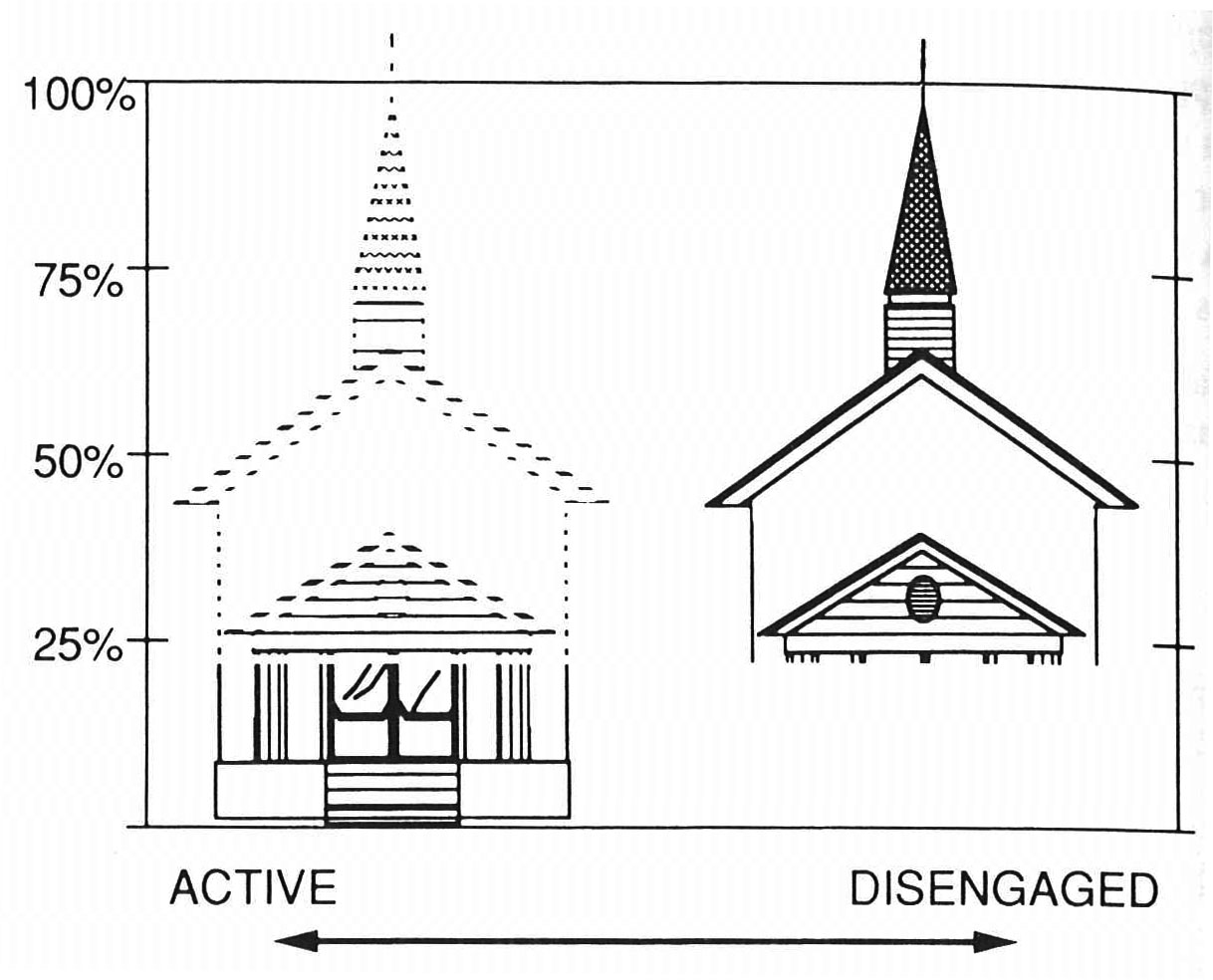
Table 8.13: Dropout Rate: Lifelong Members
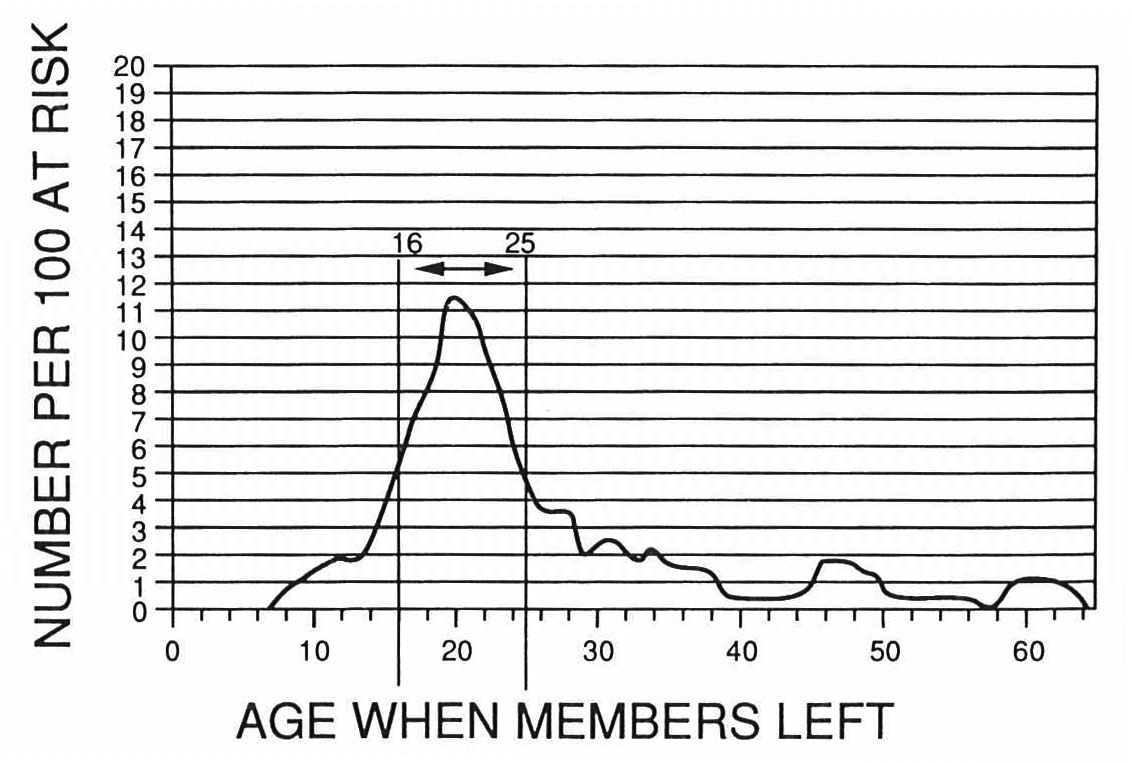
Table 8.14: Dropout Rate: Lifelong Male Members
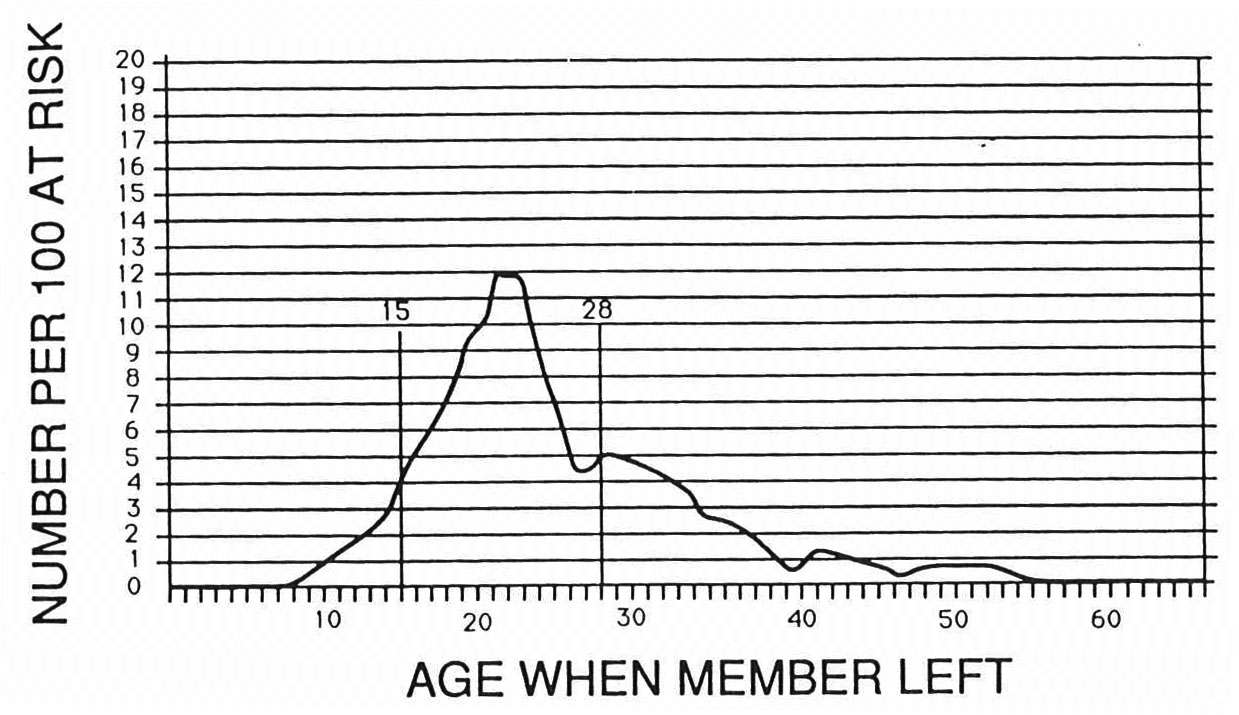
Table 8.15: Dropout Rate: Lifelong Female Members
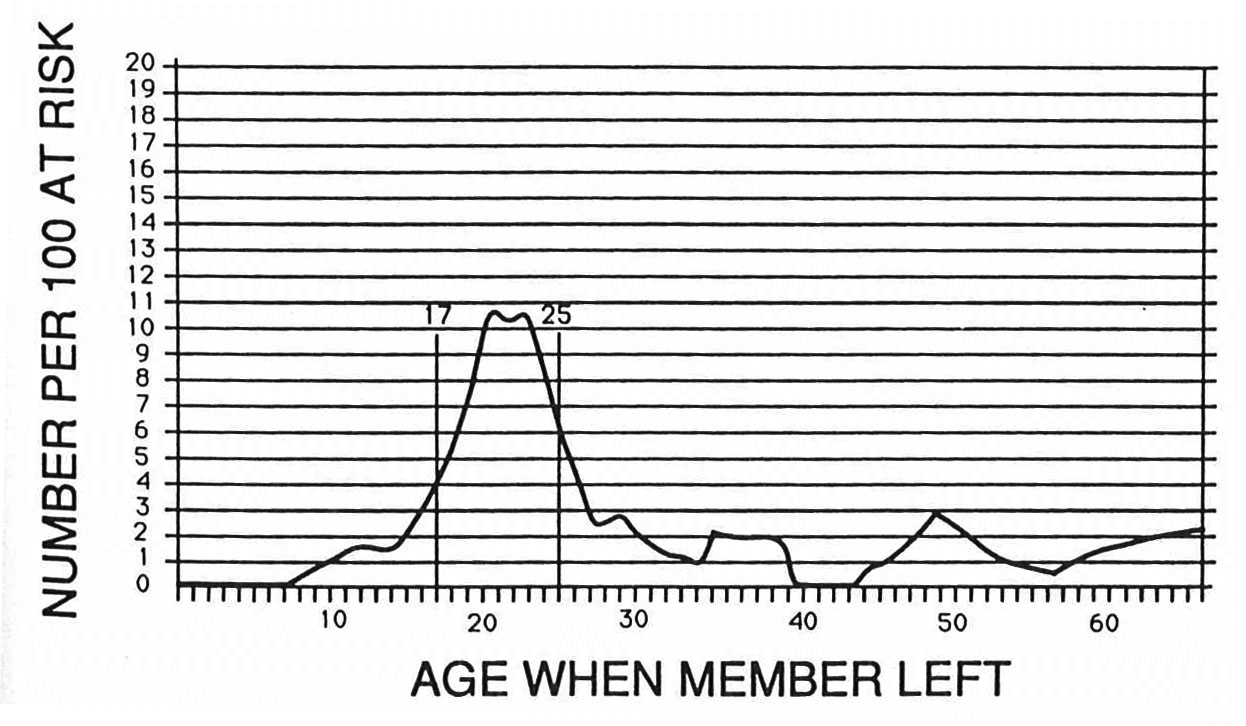
The most typical period for returning is from the middle twenties to the middle thirties when the individual marries, takes a job, begins a family, and begins to assume a more responsible role in the community. Converts who return are generally going to do that in the relatively short period immediately following their inactivity. If they don’t come back during this initial period, they likely will never come back at all (see tables 8.19 and 8.20).
Table 8.16: Dropout Rate: Converts
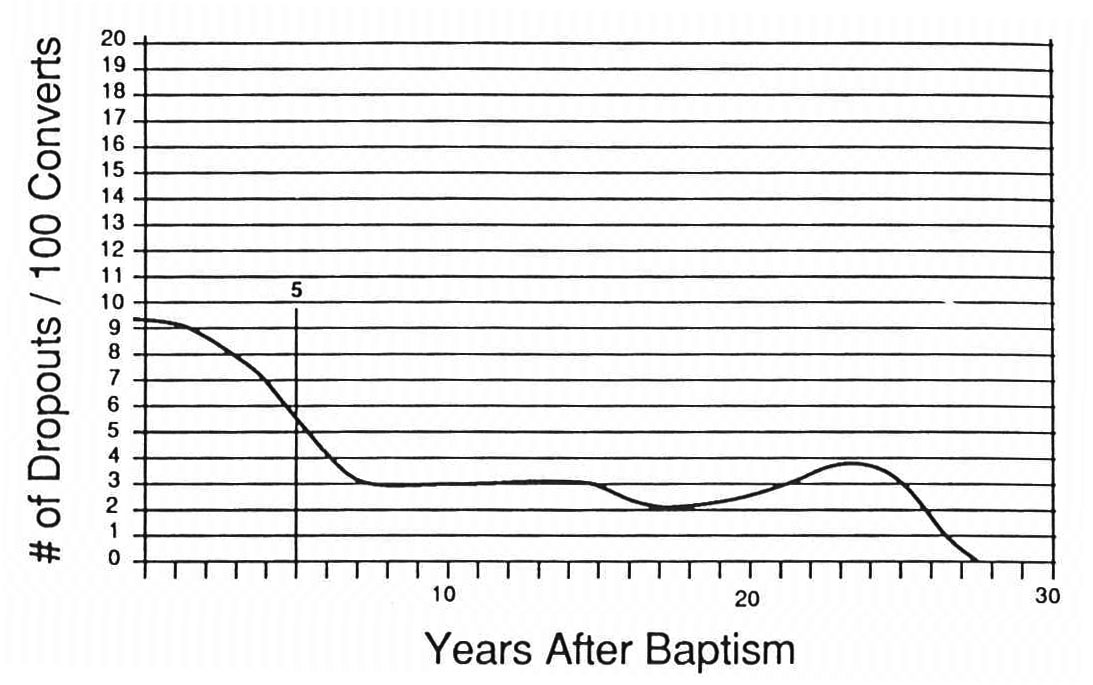
Table 8.17: Proportion of Adult Members at Age 65
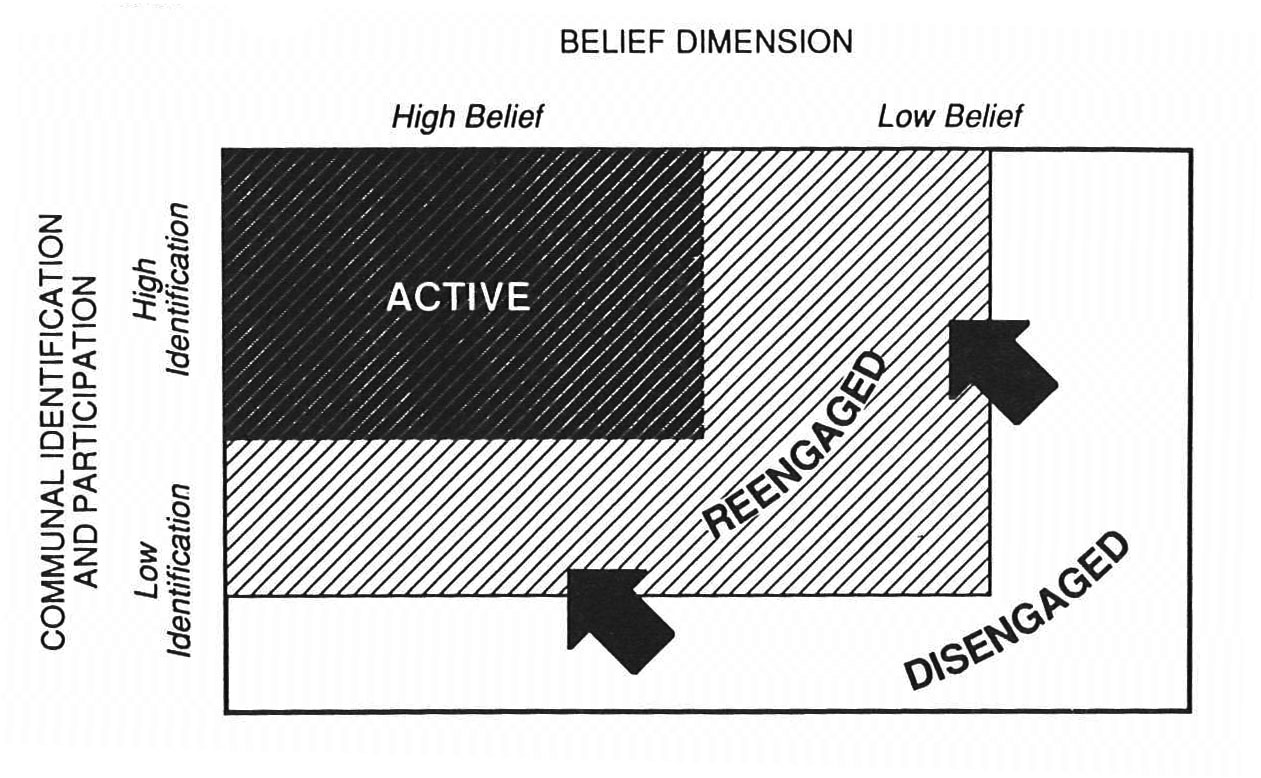
If disengagement means a partial and often temporary withdrawal from religious activity, disaffiliation, as we have used the term, refers to the process by which individuals change their organizational identification, either through leaving one church and joining another or through terminating their religious affiliation altogether. Disengagement does not involve the sharp change in personal identity that often accompanies disaffiliation (Bahr and Albrecht 1989). Most of the group we refer to in our everyday conversations as “inactives” are disengaged, using the language I am using here. While they don’t regularly participate in many of the activities we normally require to qualify for the label of “active,” they still retain a strong psychological identification with the Church and generally place quite high value on that identity. (Many will speak fondly, for instance, of the role their ancestors played in the foundation period of the Church and in the settlement of the Great Basin. Others will strongly defend the Church against its more outspoken critics.)
Table 8.18: Disengagement of Adult Members at Age 65
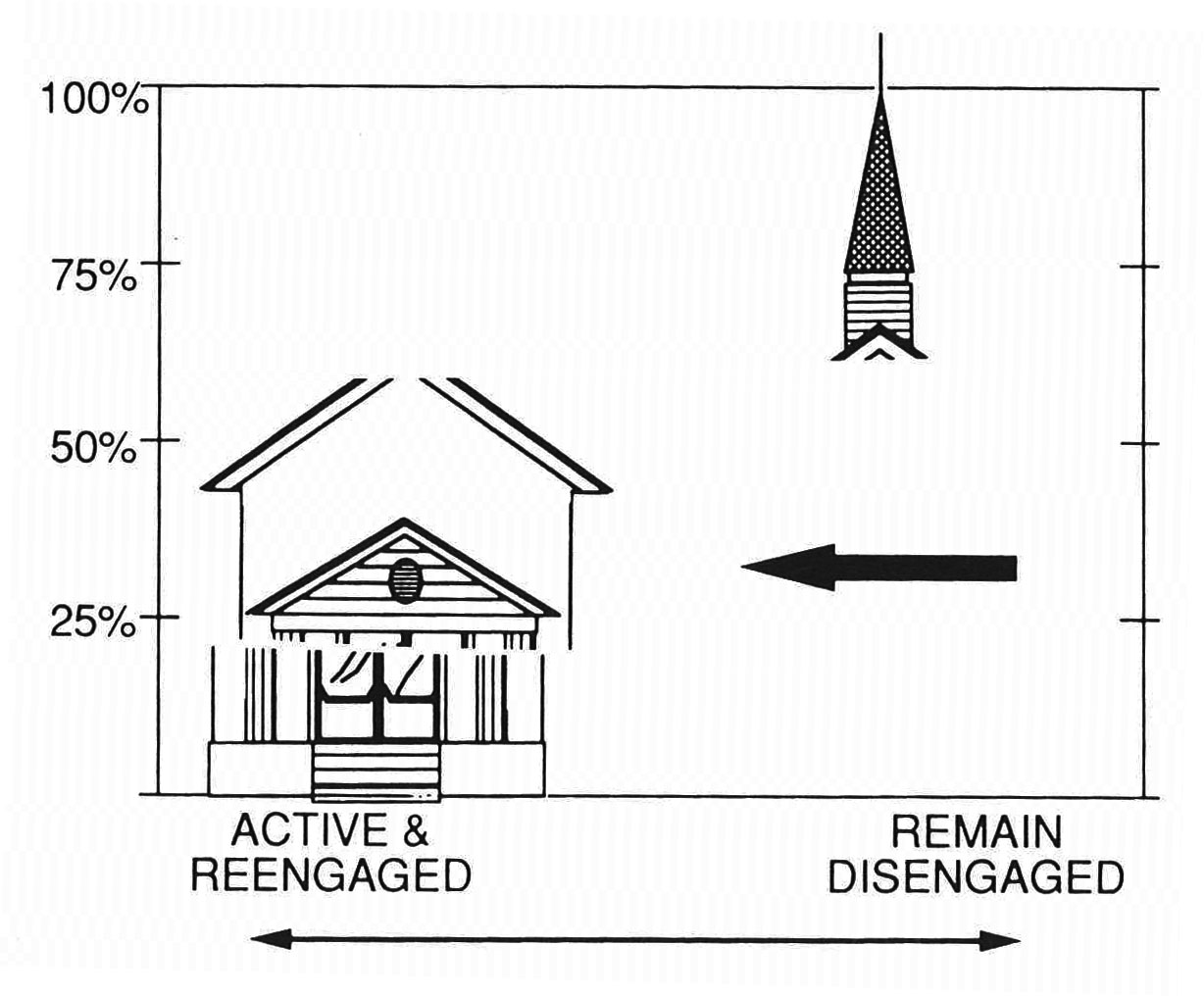
Table 8.19: Return Rate: Lifelong Members
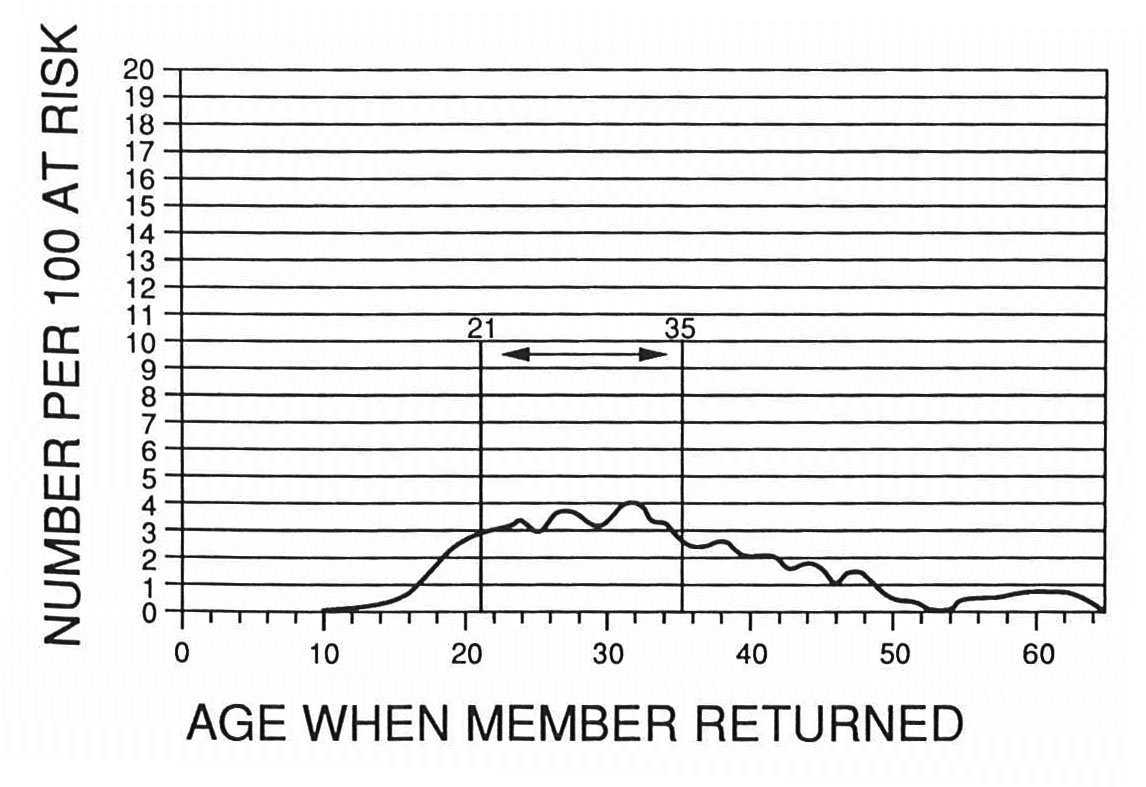
Table 8.20: Return Rate: Converts
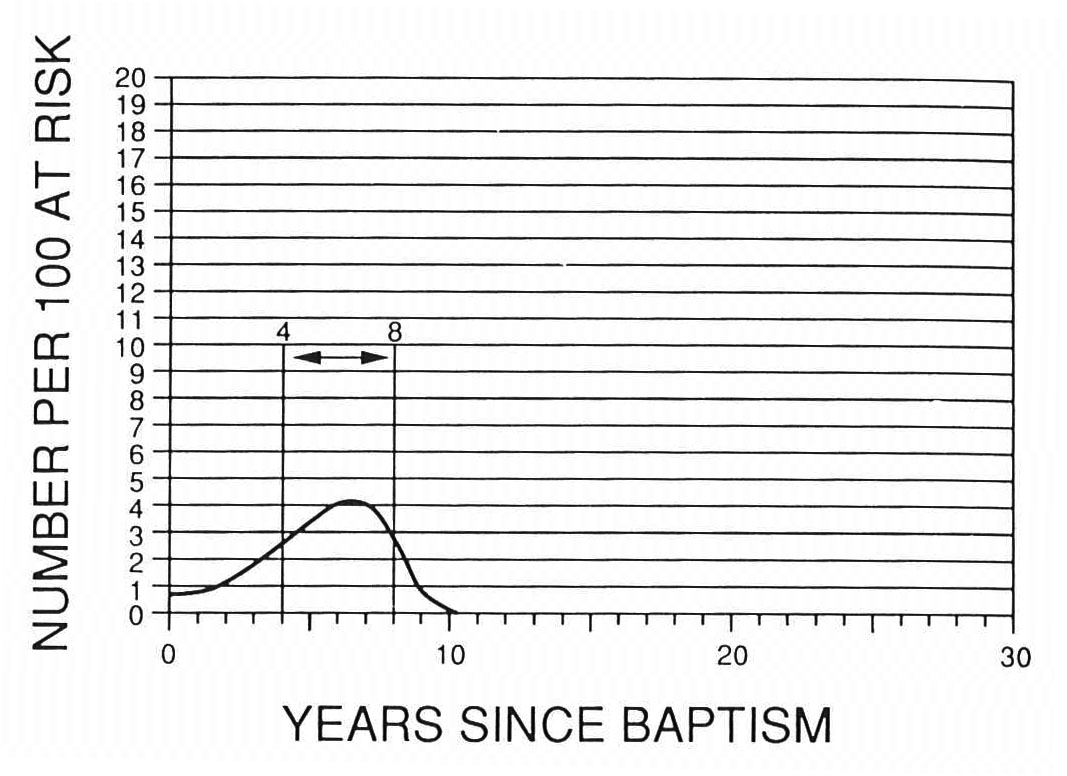
The disaffiliated obviously do not feel these ties to the Church. As we interviewed these former Mormons, it became apparent that most of them had always been somewhat marginal in the Church with many reporting that they had never really strongly identified with Mormonism (Albrecht, Cornwall, and Cunningham 1988, p. 73). We must show some caution, then, in even categorizing them as disaffiliates. As Hans Toch reminded us several years ago, “Where there is no commitment, there can be no disaffection” (1965, p. 180). There were several cases, however, where our interviewees clearly had been believing, committed, and practicing Latter-day Saints. Now they were following a different path. In their histories, there is greater evidence of a more dramatic “push” and “pull” than in the histories of those who have simply drifted away because this has been the path of least resistance. The defection of these former believers often extended over several years. The intellectual struggles that many of them faced were only part of the story of what was happening in their lives. The personal struggles frequently occurred in a context of difficult marriage and family-related problems as well as disappointments, perceived betrayals, and disenchantment with what they defined as ignorance and hypocrisy in others (Bahr and Albrecht 1989).
In analyzing these detailed interviews, Howard Bahr and I have proposed a somewhat more complex typology than that I have discussed to this point, one that looks at a larger range of responses across the two dimensions of belief and communal involvement. Building upon earlier work of Brinkerhoff and Burke (1980), our typology asserts that both disaffiliation and disengagement, as we have defined them here, should be viewed as processes that involve dimensions of both belief and identification with the religious community. This results in nine types as follows:
1. Fervent Followers: those who are fervent and committed in their beliefs. They accept wholeheartedly the basic principles of the divinity of Christ, the prophetic mission of Joseph Smith, and the literal truthfulness of the Book of Mormon. They also regularly attend Sunday religious services, pay full tithes, hold temple recommends, and so on.
2. Ritualists: those members who maintain strong group identity, regularly attend Sunday services, and participate in the various social activities of the Church but who are weak in terms of their doctrinal conversion and generally exhibit weak faith and limited understanding of the Church and its mission. The ties of these members are primarily social in nature. Basic tenets of the faith are largely irrelevant to their daily lives.
3. Cultural Saints: like the first two groups, these are generally high in terms of their communal identification. They continue to identify with their Mormon roots and ancestry but reject those doctrines that generally define one as a believing Latter-day Saint, such as the prophetic calling of Joseph Smith, the truthfulness of the Book of Mormon, and the principle of Latter-day prophets.
4. Outsiders: members who retain their beliefs in the basic doctrines of the Church but who maintain little or no involvement in the “community of the Saints.” Often these members are critical of what they define as peculiarities of social and behavioral practices of Latter-day Saints and choose to hold themselves aloof from such activities.
5. Marginal Saints: low in terms of both religious beliefs and level of community involvement. This category is typical of many of the group we would define as “inactive.” Using our terminology, they are clearly disengaged from the Church but arc generally passive in that disengagement. These individuals are highly vulnerable because they are carried along by their own inertia. Consequently, they are susceptible to being “acted upon” by others, in either a negative or a positive manner.
6. Doctrinal Apostates: like Cultural Saints, these have rejected the basic beliefs of the Church. However, they have taken an additional step and largely removed themselves from the community of Saints. Any remaining ties this group has to the Church are very tenuous at best. We have now moved from passive to active distancing of oneself from the Church, and from disengagement to disaffiliation.
7. Splinter Saints: these still claim some belief in the truths of the Restoration, but they maintain no communal involvement whatever. Some may have even joined another church, while still holding to claims of the truthfulness of the Book of Mormon and perhaps even of the prophetic role of Joseph Smith.
8. Social Apostates: these have also rejected the community, retain no identification with it, and have basically lost most of their beliefs. However, their disaffiliation is still more clearly on the communal than the belief dimension.
9. Apostates: these have rejected both their beliefs and their communal identification. They generally abhor anything having to do with the Church and sometimes devote much of their life to attempts to destroy it.
Table 8.21: A Typology of LDS Belief and Involvement in Their Religious Community
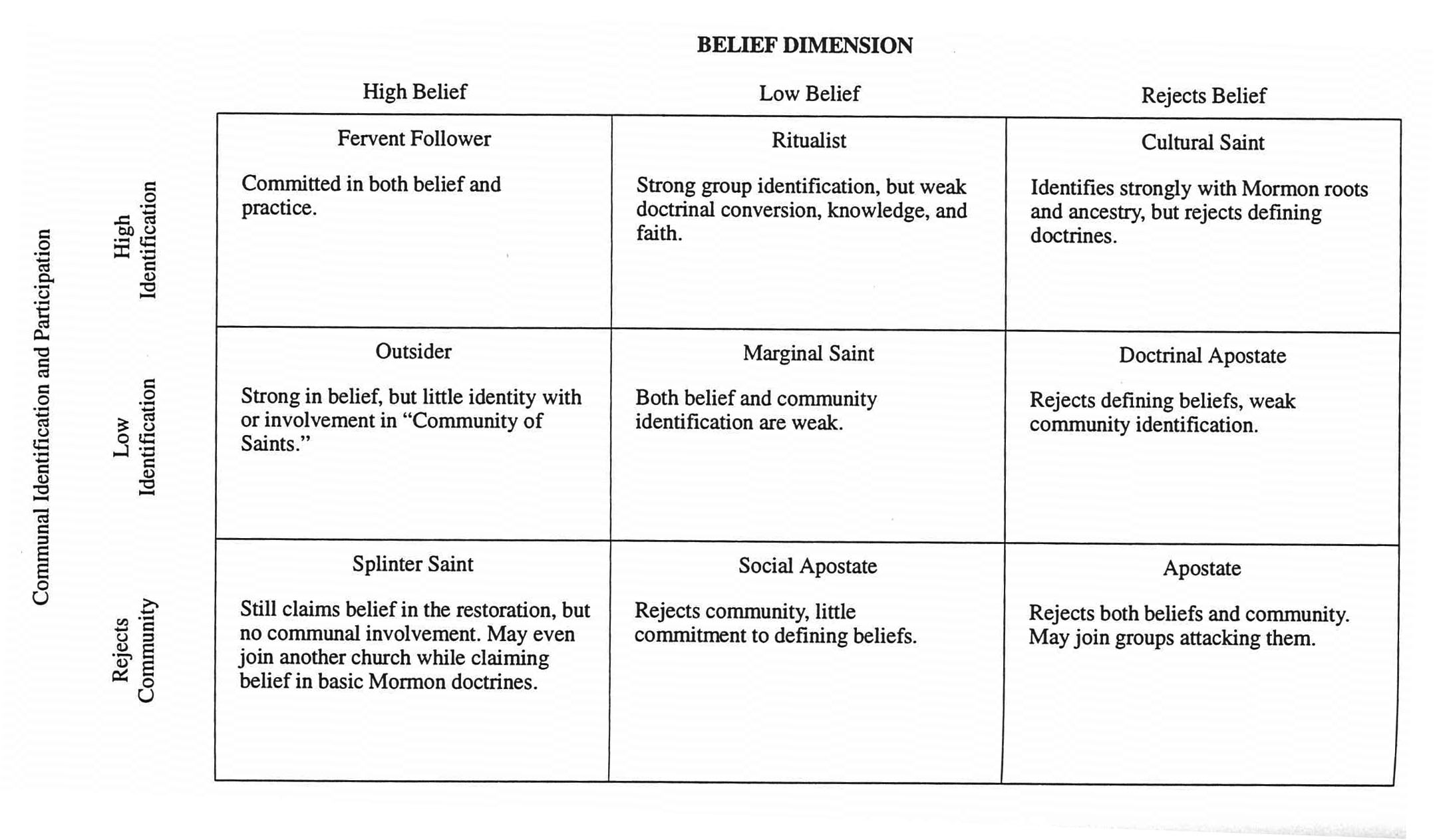
The typology is obviously skewed toward the disengaged and the disaffiliated because that is what it was developed to describe. Furthermore, these are not clearly definable, always distinct categories. Neither are they permanently set. There is constant movement among them, though some categories are clearly more fluid than others. For example, based on life projections discussed earlier, 66 of every hundred members of the U.S. membership of the Church will fall into the active, committed cell of our typology at age sixty-five. Of the 34 who are not in this category, 14 will fall primarily into one of the non-believing groups, while 20 will still maintain some degree of belief though they are not active participants in the Church. While some of this number will have always been marginal, others will have been, at one time, true believers who have now lost their faith, or their interest in participating in the Church, or both.
Total disaffiliation, of course, is not the final destination of most who disengage. As the typology suggests, there are many other stops along the way and, at any one of these, the individual might stay a while or might reverse directions and move back toward a higher level of belief and commitment. Our research shows that life course experiences are often critical in these reversals. Among the most important of these is the desire for religious involvement for one’s children after one becomes a parent. Individual reevaluations, including the need to find greater meaning and purpose in life, are also important, as are interventions and encouragement from significant others such as a spouse, a good friend, or someone from the larger religious community.
TABLE 8.22: Current Religious Preference of Former Mormons Residing in Utah, 1980–81
| # | % | |
| No Preference | 25 | 42 |
| Roman Catholic | 13 | 22 |
| Baptist, Born-Again Christian | 3 | 5 |
| Church of Christ | 2 | 3 |
| Christian | 2 | 3 |
| Pentecostal, Assembly of God | 2 | 3 |
| Methodist | 2 | 3 |
| Presbyterian | 2 | 3 |
| Congregational | 1 | 2 |
| Episcopal | 1 | 2 |
| Unitarian | 1 | 2 |
| Jehovah's Witnesses | 1 | 2 |
| Greek Orthodox | 1 | 2 |
| Other | 2 | 3 |
| Protestant, unspecified | 1 | 2 |
| Sample Total | 59 | 99% |
Source: Albrecht and Bahr, 1983
I began by indicating that my focus would be primarily on the consequential dimension of religion or on the question of what difference it makes. The very typology itself suggests some of the differences it makes. Let me briefly address others. In so doing, I will draw from interview and questionnaire data obtained from a group of individuals who at one time defined themselves as Latter-day Saints but who no longer do so (Albrecht and Bahr 1983). Such individuals have two possible destinations: either they change their religious identity through leaving the Church and joining another, or they terminate their religious identification altogether. From our interviews with former Mormons, we discovered the following “destinations” for the outwardly bound. The largest group by far, 42 percent, indicate no religious preference at all—they have become true disaffiliates. The next largest group have joined the Roman Catholic church. The size of this group may be somewhat surprising, but let me note that most of these were urban residents and that the change was often a function of marriage. The remainder, about one-third, join a variety of other groups—mainstream Protestant, Pentecostal-born-again organizations, and in a couple of cases smaller groups such as the Jehovah’s Witnesses and the Greek Orthodox church.
The thing I want to focus on primarily, however, is the question of outcomes—what difference it makes. Five indicators of current religiosity are summarized in table 8.23. On each of these indicators, we compare six groups of respondents: (1) Catholics and Protestants in Utah, (2) former-Mormons who have converted to Catholicism or one of the Protestant churches, (3) lifelong Latter-day Saints, (4) converts to the LDS church, (5) individuals in our sample who indicate no religious identity, and (6) those who indicate no religious identity but who, formerly, were Latter-day Saints.
Let me make several summary observations from the data. First, Latter-day Saints in Utah are more religiously active on all of our indicators than any other category. Converts to the Church are somewhat more active than lifelong members, though only one of the differences is statistically significant. However, both groups score significantly higher on our measures of involvement than any other group.
Second, former-Mormons who have converted to another faith behave pretty much like lifelong members of that faith. On some indicators they are a little more active; on others a little less. But the pattern is similar to that of the group they have joined, and the overall level of involvement is substantially lower than for current Latter-day Saints, either of the convert or lifelong variety.
Third, former-Mormons who now indicate no religious preference behave quite similarly to others who express no preference but who have come from other starting points. However, of all categories in our study, such no-preference former-Mormons are the least active of all groups on four of our five indicators and second least active on the other. Having forsaken their self-identity as Mormons, these individuals largely reject religious involvement altogether.
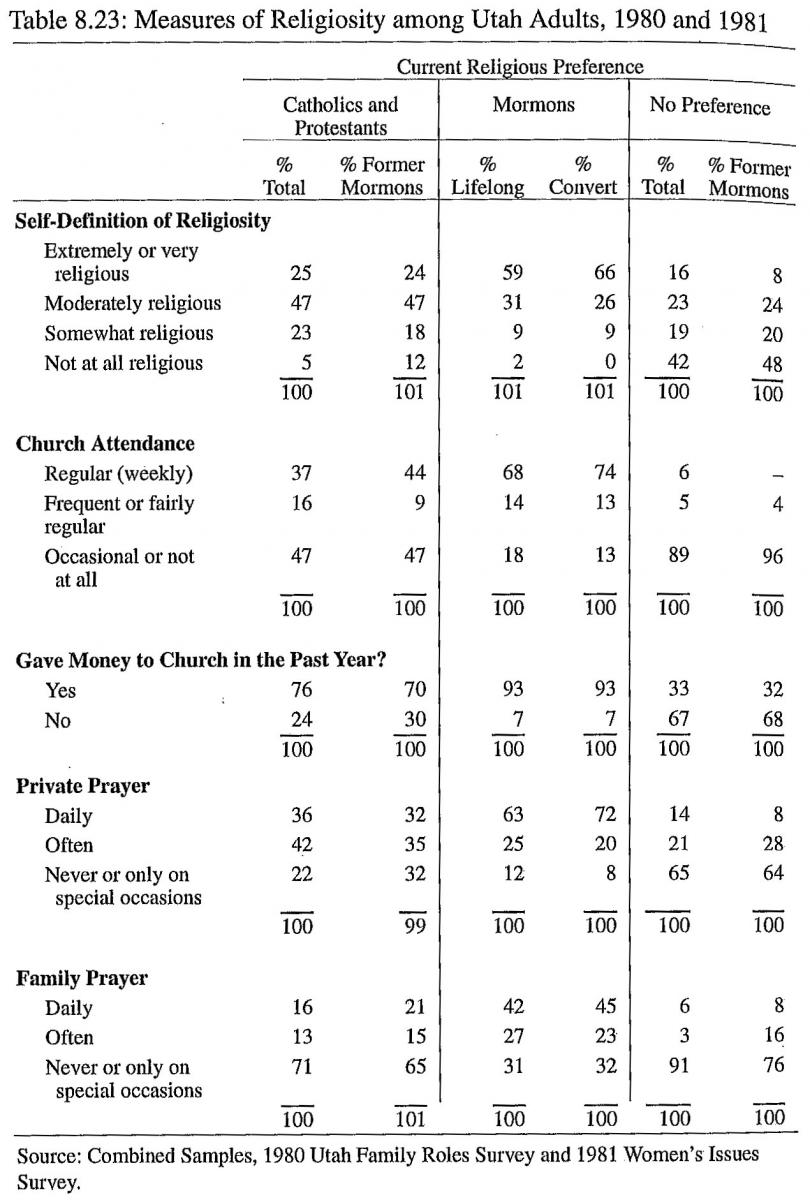
Let me summarize briefly: many Latter-day Saints will have a period during their lives when their beliefs or their desire to be involved in the community of the Saints may waver. Most who have such periods will eventually return; their disengagement is seldom permanent. Following Dean Hoge, we are reminded that “a researcher must begin with the view that religious change is often temporary, and usually it occurs in the process of other changes in the total life economy” (1988, p. 96). Parenthetically, I might say that anyone with an ecclesiastical calling might benefit by beginning with the same view. At the same time, our data show that among our Latter-day Saint samples some will go through the rest of their lives as either largely passive inactives who retain their religious identification but contribute little to the Kingdom or as disaffiliates who reject their faith altogether or choose to reflect it in another religious organization. Their destination clearly makes a difference on a variety of indicators. It also makes a very important difference in another regard—their family life. It is to that I will now turn.
Religion and Family
The one other major social institution that we expect to have the strongest linkage with religion is the family. There is ample reason for this assumption. Religious rites frequently mark most of the major family events such as birth, marriage, and death. In our society, religion also regulates other family-related behaviors such as premarital sexuality, mate selection, family size, and family stability (Heaton and Goodman 1985, p. 344). In addition, many other areas of decision-making in the family, such as division of labor between spouses and the nature of child rearing practices, are guided by religious teachings and precepts.
Let me identify some important linkages between religion and family in the Mormon context. I will begin again with comparisons developed to demonstrate some of the behavioral consequences of religion as this relates to several family variables. Table 8.24 taken from recent work by Heaton and Goodman, shows several patterns of family formation for Catholics, Protestants, Mormons, and individuals expressing no religious preference. While some of the differences are not particularly large, a consistent pattern emerges. Mormons are more likely than other groups to marry; they are less likely to divorce; if they do divorce, they are more likely to remarry; and they are likely to bear a larger number of children. On each measure, there is a clearly-defined impact associated with one’s religious affiliation. Those with no religion are generally least likely to marry, most likely to divorce if they marry, least likely to remarry following a divorce, and most likely to have the smallest family size. The no religion group is followed, in most cases, by liberal Protestants, conservative Protestants, Catholics, and then Mormons.
| Table 8.24: Patterns of Family Formation for Catholics, Protestants, and Mormons | |||||
| Catholics | Liberal Protestants | Conservative Protestants | Mormons | No Religion | |
| % of those over age 30 who have ever married | 89 | 94 | 96 | 97 | 83 |
| % of persons ever married who have ever divorced | 21 | 27 | 29 | 16 | 41 |
| % of persons ever divorced who are currently remarried | 42 | 56 | 58 | 59 | 42 |
| Children ever born—standardized for marital duration | 2.38 | 2.03 | 2.27 | 3.31 | 2.02 |
Source: Heaton and Goodman, 1985.
What about the impact of one’s level of religious activity as opposed to mere identity? Overall, church attendance is associated with lower rates of nonmarriage and divorce, higher probabilities of remarriage after divorce, and, for Mormons, higher fertility (Heaton and Goodman 1985, p. 344). Level of activity has a clear impact in addition to that observed for affiliation.
| Table 8.25: Patterns of Family Formation by Frequency of Church Attendance | ||||||||
| Catholics | Liberal Protestants | Conservative Protestants | Mormons | |||||
| Attendance | Attendance | Attendance | Attendance | |||||
| High | Low | High | Low | High | Low | High | Low | |
| % of those over age 30 who have ever married | 88 | 91 | 95 | 93 | 96 | 95 | 97 | 96 |
| % of persons ever married who have ever divorced | 13 | 30 | 19 | 32 | 20 | 37 | 12 | 23 |
| % of persons ever divorced who are currently remarried | 47 | 40 | 57 | 56 | 67 | 54 | 69 | 49 |
| Children ever born—standardized for marital duration | 2.46 | 2.26 | 2.03 | 2.05 | 2.14 | 2.47 | 3.46 | 2.78 |
Source: Heaton and Goodman, 1985.
Among Latter-day Saints, differences between temple and non-temple marriages enlarge the differences between frequent and infrequent attenders at religious services. Temple marriages are characterized by lower divorce rates and larger family sizes. Non-temple marriages are almost five times more likely to result in divorce than are temple marriages. Remarriage rates are comparable between the two groups.
| Table 8.26: Patterns of Family Formation Comparing Temple and Non-Temple Mormon Marriages | ||
| Temple Marriage | Non-Temple Marriage | |
| % of persons ever married who have ever divorced | 5 | 30 |
| % of persons ever divorced who are currently remarried | 61 | 63 |
| Children ever born (first marriage intact, standardized for marital duration) | 3.46 | 2.62 |
Source: Heaton and Goodman, 1985.
I will say more about education in just a moment, but let me note here that Heaton and Goodman found that including education as a control in their study of family variables did not negate any of the above conclusions regarding religious differences. In fact, controlling for education actually accentuated the Mormon and non-Mormon differences because highly educated Mormons had higher than group average scores on several of the variables while the opposite was more likely to be the case for the more highly educated in other groups.
Another way to look at the religion-family connection is to examine the concept of religious socialization. Religious socialization involves the transfer of religious attitudes and behavior patterns from one generation to the next. The family is generally seen as the primary force in shaping the attitudes and values of its members, including their religious attitudes and values. Most of us develop our own religious behavior patterns out of the experiences we have had in the home (Stott 1988).
Table 8.27: Factors Influencing Adult Religious Commitment
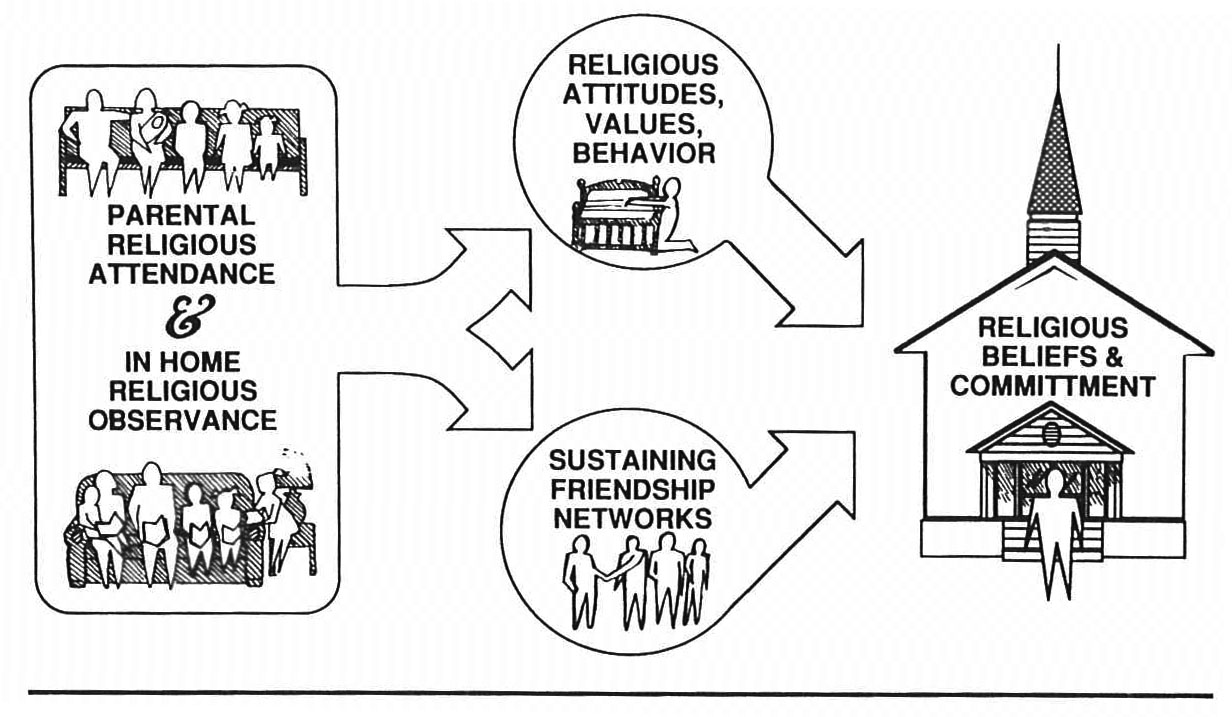
Perhaps one of the best ways of addressing the importance of religious socialization is to determine those things that best predict current religious patterns of adults. My colleague Marie Cornwall has shown that parental church attendance and the nature of religious observance within the home have a significant effect on current adult belief and commitment in at least two important ways: first, in the direct effect evident in the transmission of attitudes, values, symbolic references, and behavior patterns from one generation to the next; and second, in the impact that results from the channeling of individuals into friendship networks during the teen and young adult years that will sustain and support the religious values taught in the home (Cornwall 1987, 1988,1989).
Let me show you more specifically how that works by turning, again, to our study of disengagement. Table 8.28 shows the influence of family background on activity through the effect of three variables in addition to gender: (1) whether parents are both members of the Church; (2) whether parents attend church; and (3) the nature of home religious observance. The latter refers specifically to whether, in addition to attending church, the family holds family prayer, engages in religious discussions in the home, and reads the scriptures.
TABLE 8.28: Effect of Family Background on Religious Activity (Male vs. Female)
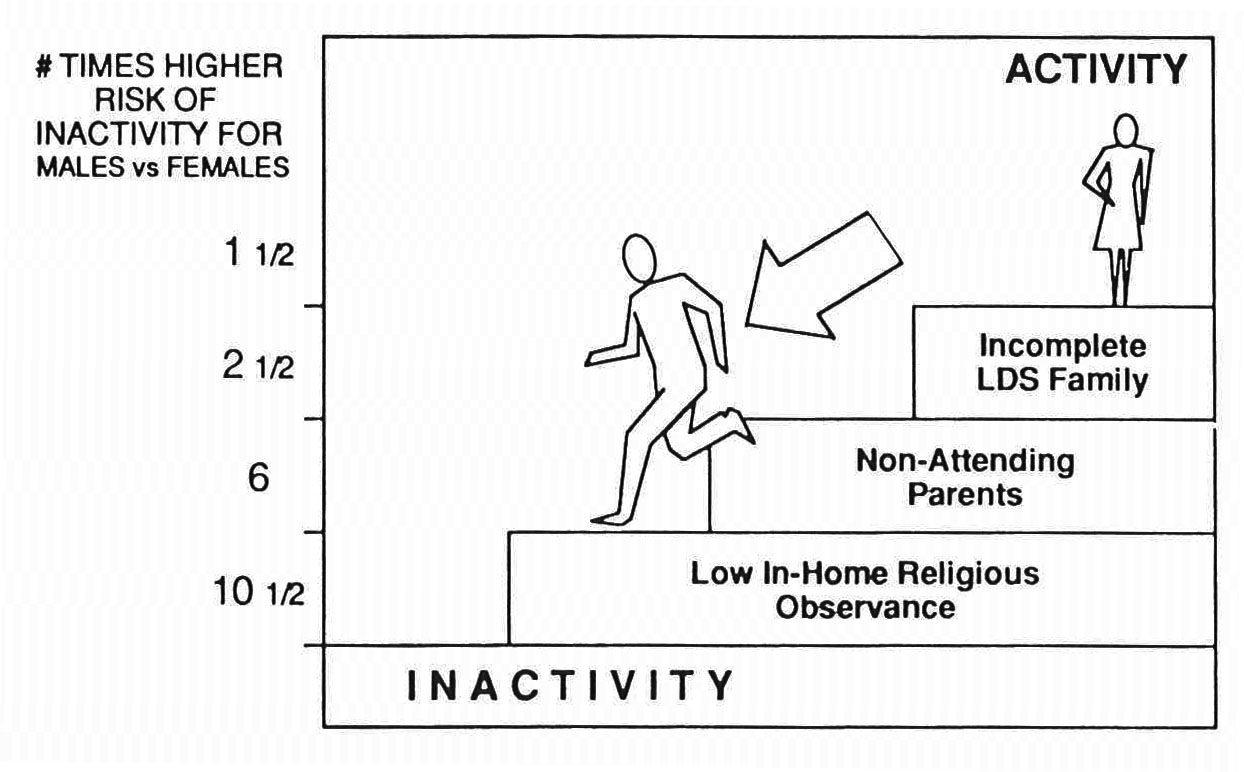
Males are 1 1/
Table 8.29: Effect of Family Background on Religious Activity
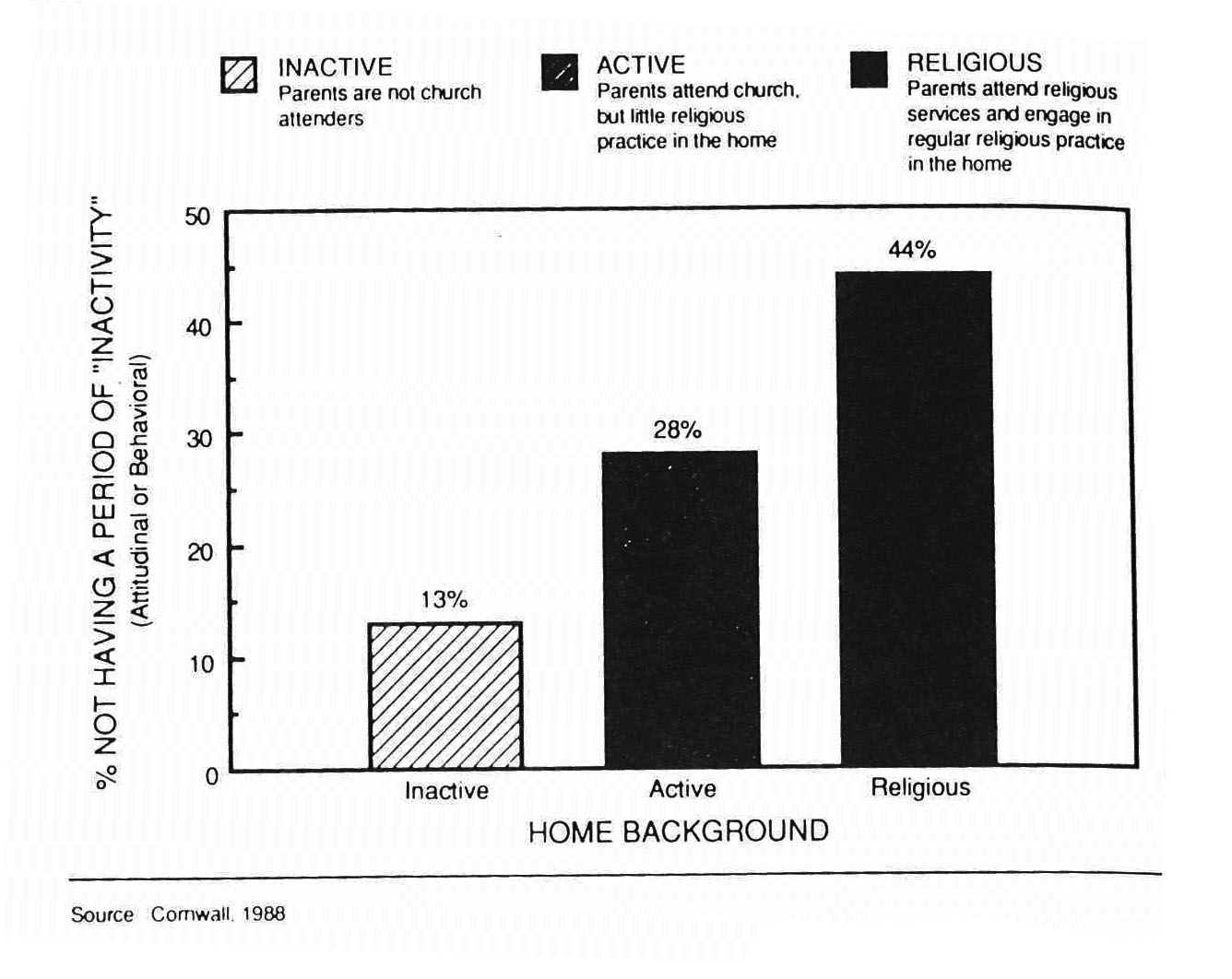
Table 8.30: Religious Variables, Family Variables, and Well-Being
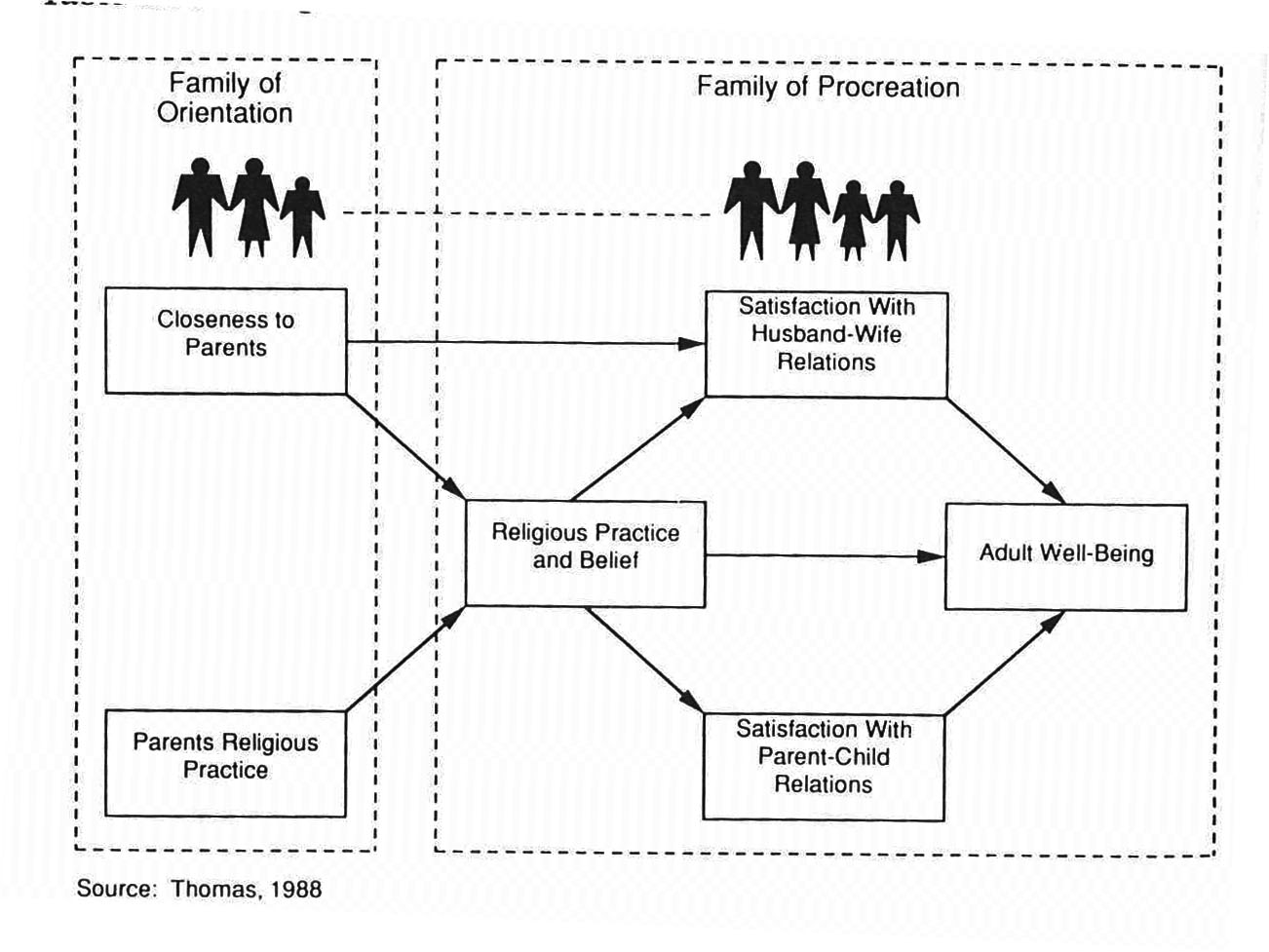
Religion, then, clearly affects the nature of family relationships, including marital success and happiness. Family activities, in turn, have an important effect on religious outcomes, such as the probability of children remaining active in their church and avoiding periods of disengagement. The next step is to examine the relationship between both family and religious variables and individual levels of overall well-being. My colleague Darwin Thomas is proposing important linkages between family and religious variables and adult social well-being. His analysis of several different data sources provides strong preliminary support for his model (1988).
Religion and Education
The third and final section of my essay takes me to a topic I have addressed several times before. Specifically, among Latter-day Saints, what is the relationship between the achievement of higher education and religious commitment and behavior, and are we any different from other groups in this regard?
Let me begin this section by saying something about the unique nature of the continued vitality of religion in America. I emphasize again the paradoxical nature of American religious practice and the fact that I am concentrating for the moment on only its most public manifestation—that of holding membership in a church. While it is normative for Americans to report membership in a religious organization, this contrasts sharply with the pattern in Western Europe. In America it is generally recognized that religious denominations are “culture-affirming institutions” that symbolize many of the values any “good American” should hold (Hadaway and Roof 1988). One simply does not find this assumption in much of Western Europe. Let me examine for a moment the situation in the British Isles as an example (For a more detailed treatment, see Heaton, Albrecht, and Johnson 1987).
The decades immediately prior to the 1850s were a time of great religious agitation in Britain. Our historians and theologians have made much of the social conditions in upstate New York that surrounded the latter-day restoration. Joseph Smith himself characterized the time as a period of “unusual excitement on the subject of religion” (JS–H:5). We have paid significantly less attention to the social and economic conditions in the British Isles that characterized the period of greatest missionary success there. However, as Tim Heaton and I have noted earlier, the arrival of the Mormon apostles in England during a time of great religious change had to be more than fortuitous. In this setting, the message of the restored gospel rang true to many who were willing to listen to the testimony of the young apostles from America. Convert baptisms in Britain reached almost 35,000 in the 1840s and almost 45,000 in the 1850s. This was followed by a precipitous decline to the point of just 3,700 baptisms in the 1890s.
Table 8.31: British Baptisms in the Mormon Church: 1840–1919
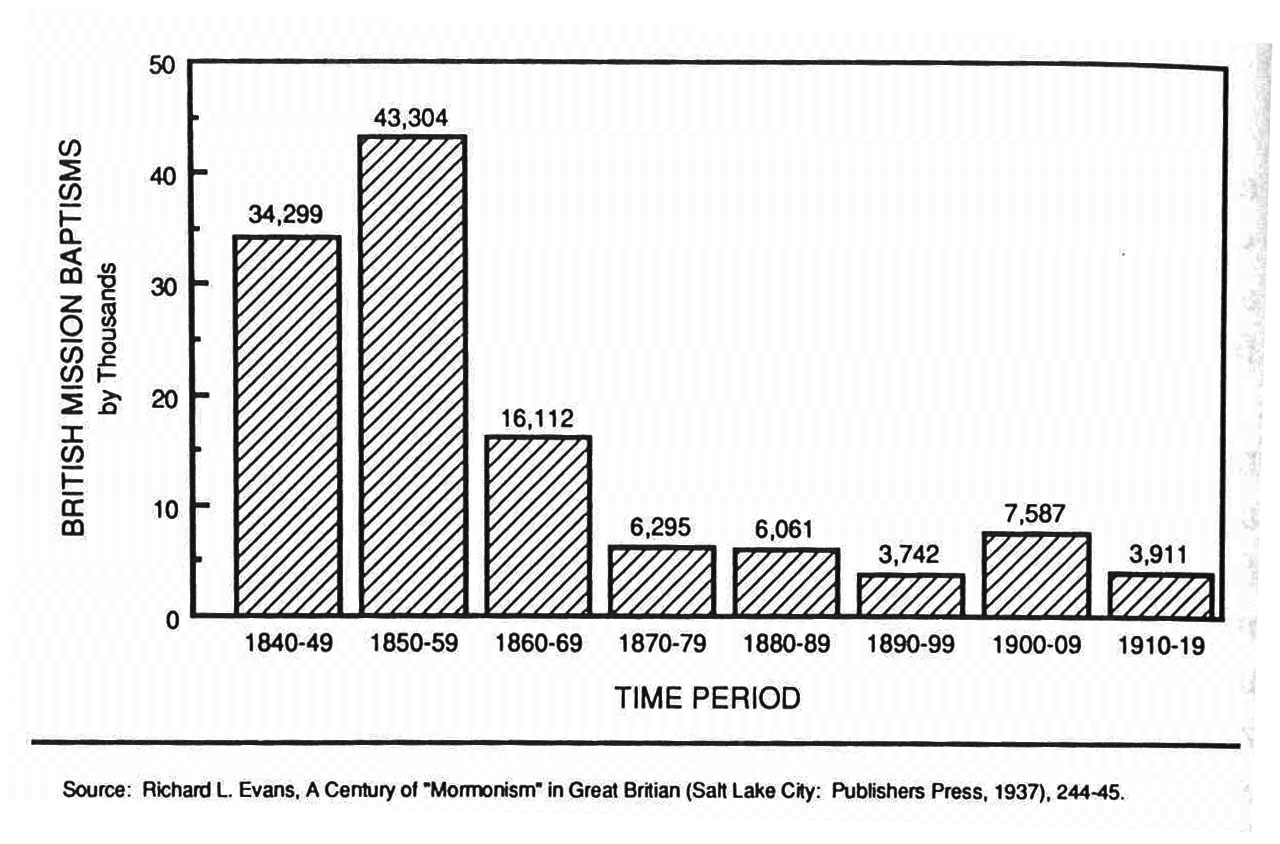
The dramatic downturn in the number of British converts that began in the middle 1850s closely followed the pattern of downturn in religious activity in British society more generally. Cox describes how the 1850s were followed, first, by an increasingly powerful ethical revolt against Christian orthodoxy and then by the Darwinian revolution in thought, both of which made “agnosticism respectable if not universal by the turn of the century” (1982, p. 7). Religious institutions during this period began to wither away in an almost Marxian pattern until by the early 1900s Arnold Bennett could say, “I never hear discussion about religious faith now. Nobody in my acquaintance openly expresses the least concern about it. Churches are getting emptier. . . . The intelligentsia has sat back, shrugged its shoulders, given a sigh of relief, and decreed t acitly or by plain statement: ‘The affair is over and done with’“ (qtd. in Cox 1982, p. 8).
The continued decline since the mid-nineteenth century is well documented. While survey data for the United States show a steady rate of attendance at weekly worship services, the opposite pattern is evident in Great Britain. Wilson notes that “the decline in attendance appears to have taken place in waves,” beginning first with the working class and then spreading, in the twentieth century, to the middle class. The Church of England suffered the first losses, followed by the Free churches and then the Catholics (Wilson 1978, p. 401). By the 1970s only about 5 percent of the adult population in the Church of England even attended Easter religious services, and the percentage continues to decline (Argyle and Beit-Hallahmi 1975, p. 9).
What is my point? Simply that in the industrial world, where it seems that the impact of science and education are most visible and conspicuous, there has been a sharp decline in affiliation with religious institutions and religious practice. The widely accepted assumption that follows is that we live in a world of irreligion, a world where advancements in science and education have made religious interpretations superfluous or unnecessary. In the words of British physicist Paul Davies, “If the church is largely ignored today it is not because science has finally won its age-old battle with religion, but because it has so radically reoriented our society that the biblical perspective of the world now seems largely irrelevant” (1983, p. 2).
But we have already seen evidence that U.S. data seem to contradict this pattern. Church membership is as high as it has ever been, and while British churches are largely empty a significant percentage of Americans still attend worship services on a regular basis. These findings have led Greeley to argue that “there is no unidirectional evolutionary movement from the sacred to the secular” and “what changes have occurred make religious questions more critical rather than less critical in the contemporary world” (Greeley 1972, cited in Nelson 1988, p. 126; Bahr and Chadwick 1988).
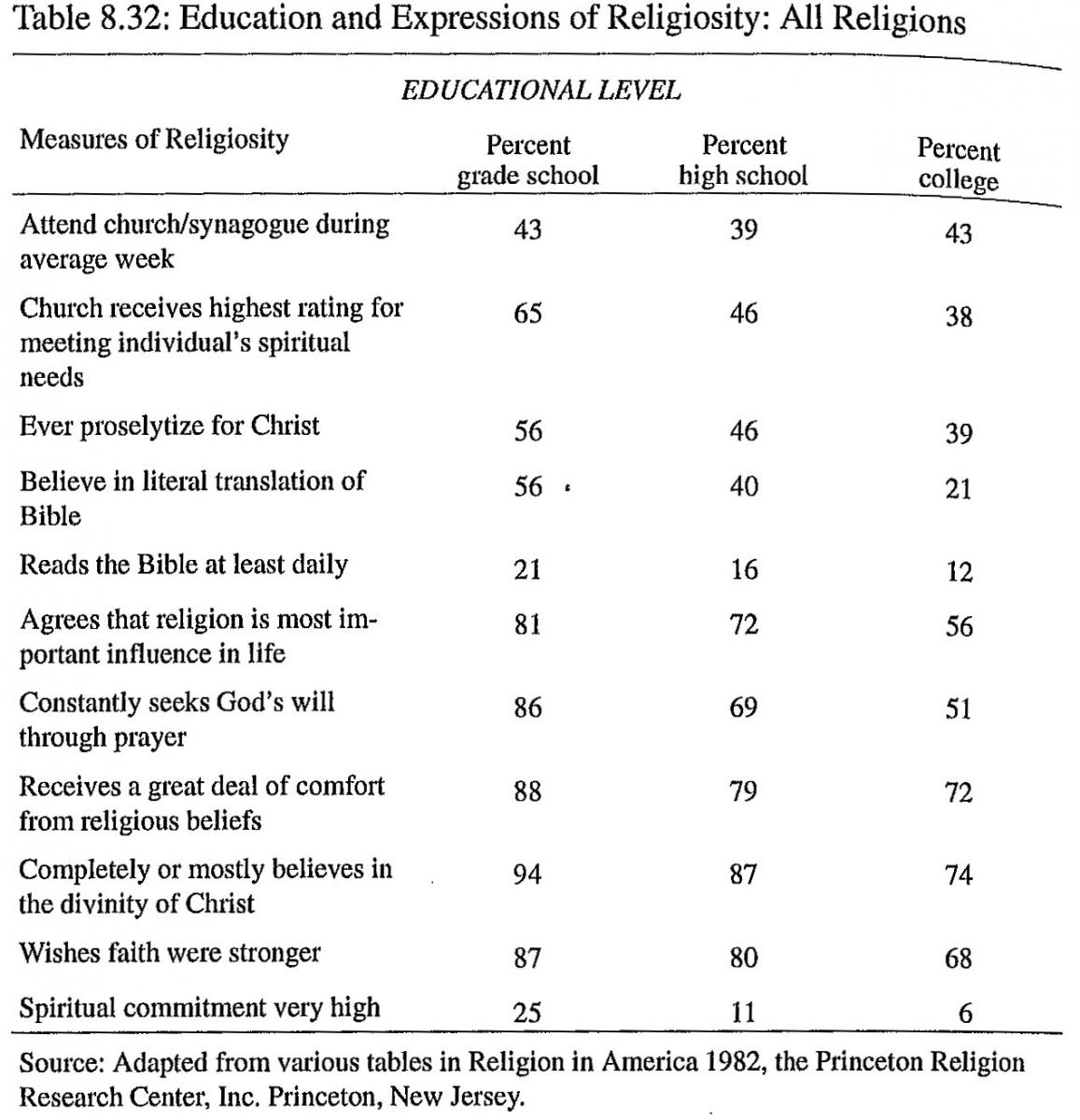
Nevertheless, the debate continues. For my present purposes it is enough to reiterate that whatever the historical patterns of increasing or decreasing religious activity, and whatever the depth or superficiality of that activity, the data are overwhelming in their consistency in pointing to a negative effect of education on religiosity. This has recently been confirmed again by national survey data. Hadaway and Roof report the higher the level of education, the higher the probability that their respondents would have apostatized from the church. They conclude that higher education tends to both expand one’s horizons and increase exposure to countercultural values. Such exposure works to erode the traditional plausibility structures which maintain the poorly understood religious convictions so typical of American religion (1988, p. 36). In other words, poorly grounded religious beliefs have simply been unable to stand in the face of challenges generated by modern science and higher education.
Table 8.33: Education and Religiosity: All Religions
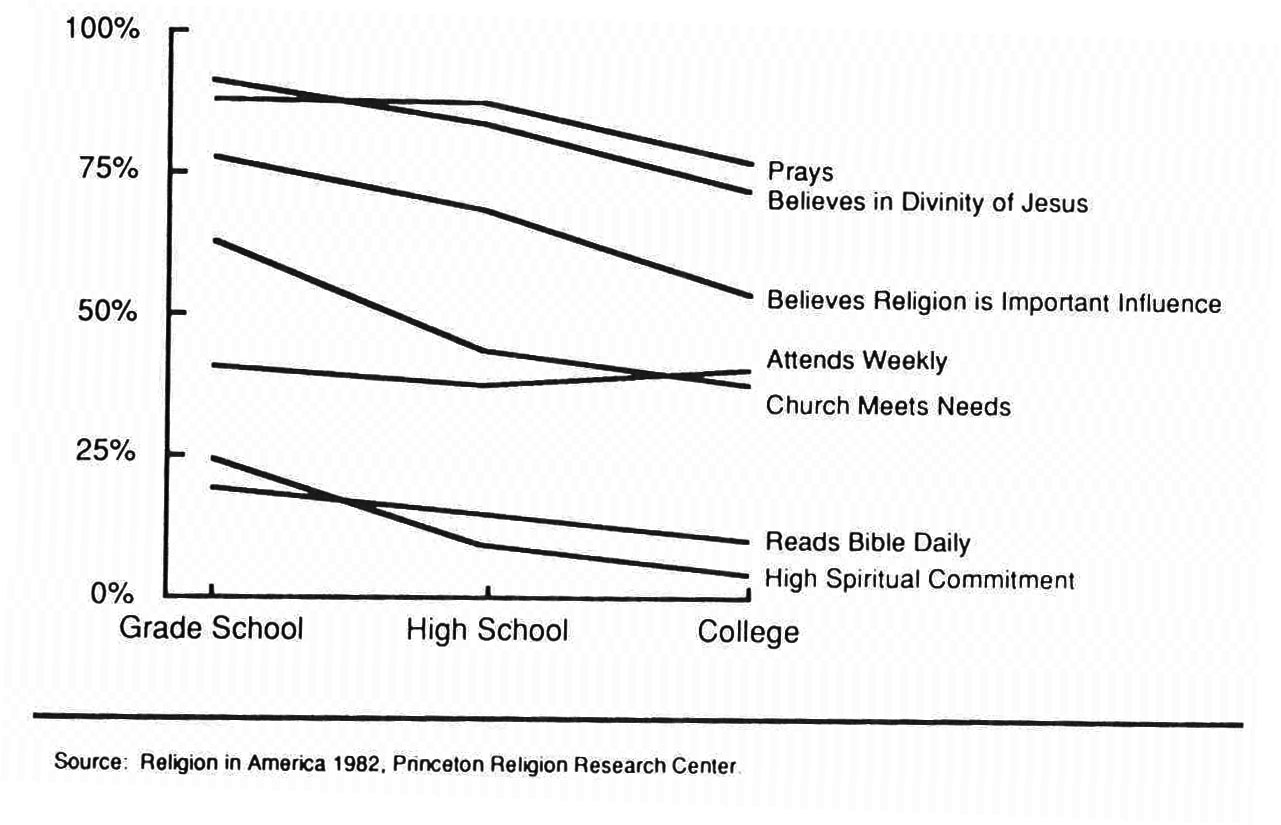
The data presented in tables 8.32 and 8.33, taken from a national survey by the Princeton Religious Research Center, confirm the Hadaway and Roof findings and show a substantial negative relationship between educational level and a series of measures of religiosity.
On all but one of the indicators, the pattern is the same: the higher the level of education, the lower the level of reported religious belief or experience. The one exception is attendance at worship services, but, as we have noted elsewhere, there is some evidence that church attendance in this country is much like participation in other types of voluntary associations—it has other than religious meanings (Albrecht and Heaton 1984). And there is extensive evidence of a strong positive correlation between educational level and voluntary association participation.
However, in stark contrast to the pattern evident in these national survey data, our studies of Latter-day Saint samples demonstrate a strong positive relationship between level of education and religiosity. Table 8.34 shows the relationship between education and attendance at weekly worship services. For men in the sample, weekly attendance at Sunday services goes from a low of 34 percent for those with only a grade school education to 80 percent for those with postgraduate experience. For women, the results are the same except for the modest drop-off in attendance for women with post-baccalaureate experience.
Table 8.34: Education and Attendance: LDS Men and Women
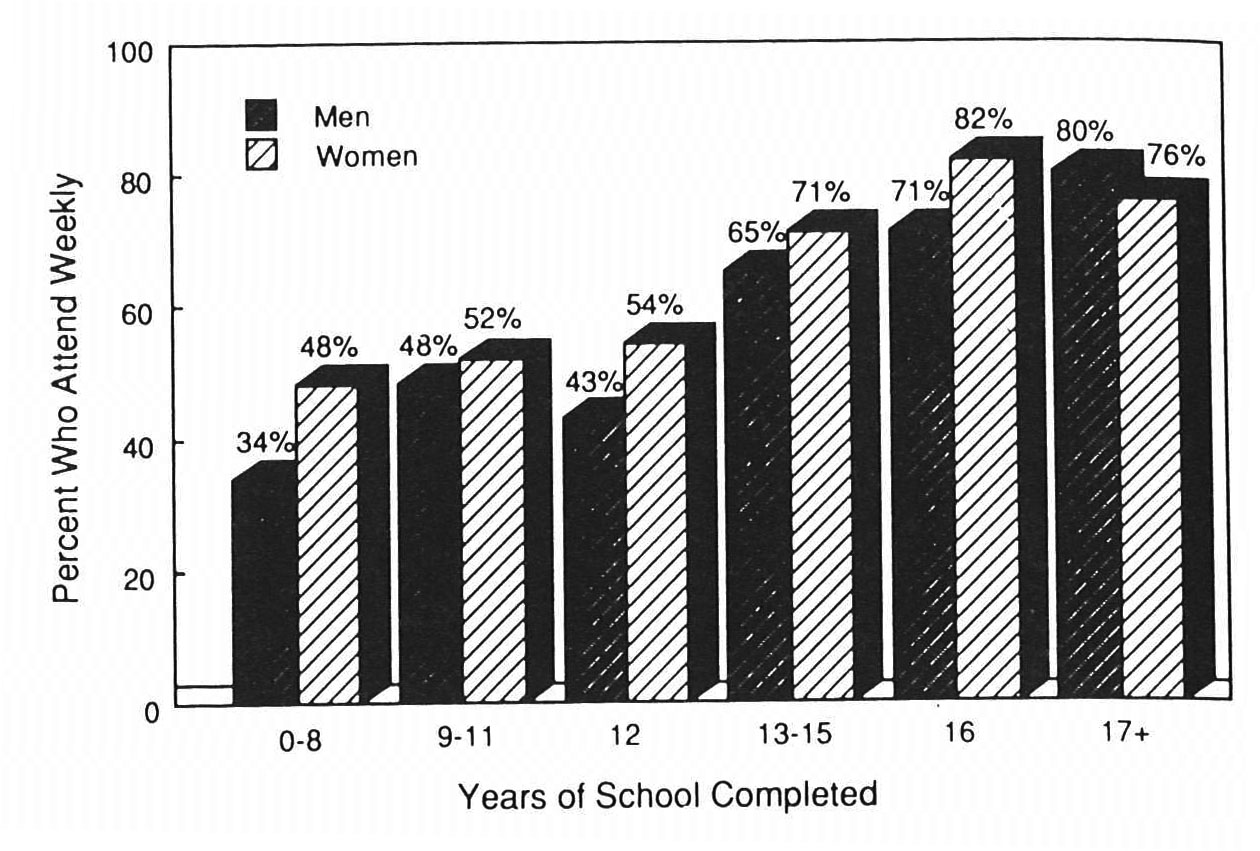
But what about other measures of belief and behavior? Generally, the same pattern holds. Whether we are talking about personal value placed on religious beliefs, attendance at church, financial contributions, frequency of personal prayer, or frequency of gospel study, the impact of increased education among Latter-day Saints is positive. These relationships also hold when we control for such other variables as attendance at church-sponsored schools, geographic area of the country, and so on. The secularizing influence of higher education simply doesn’t seem to hold for Latter-day Saints.
I have now reviewed several different data sets that speak to the processes through which some become less involved religiously, to the impacts of religion on our family life, and to the effects of higher education on religiosity among Latter-day Saints. These data present an interesting picture of who we are as a people. They indicate areas where we are similar to others and areas where our religion makes us quite different. They provide information that can be useful in our roles as parents, as educators, and as lay leaders in our wards and stakes.
Table 8.35: Education and Religiosity: Latter-day Saints
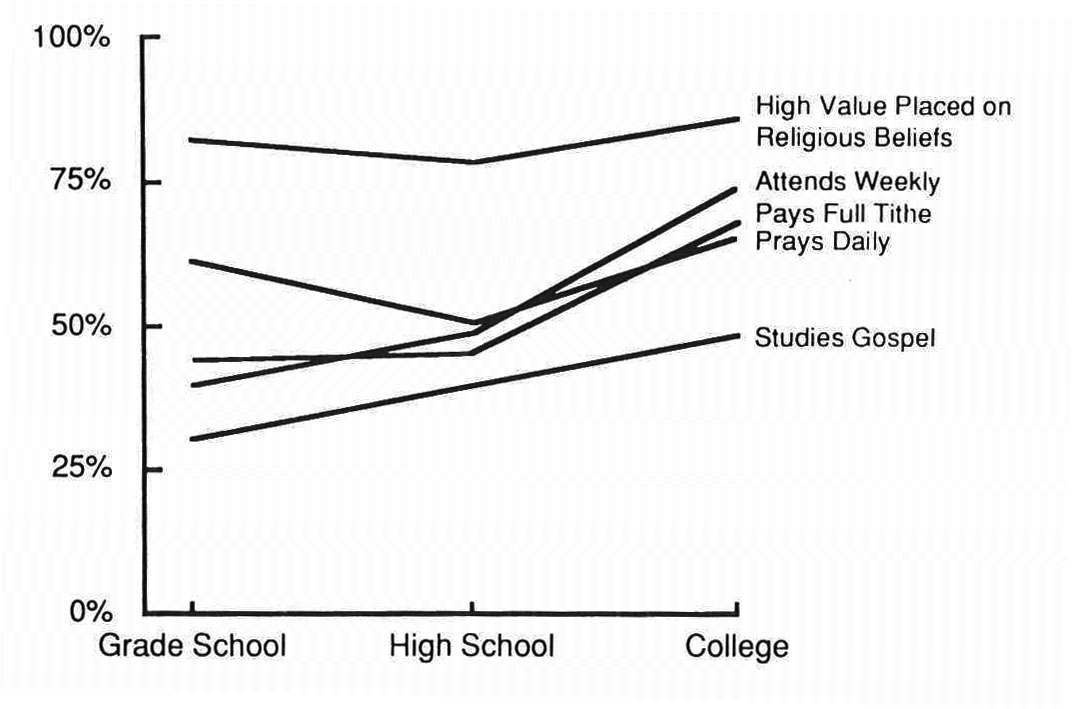
In the sociological studies I have reviewed, we see a picture of a religious organization characterized by vitality, commitment, and growth. On an individual level, it contributes to the success of our marriages and, when applied effectively in our homes, to the continued religious commitment of our children. Membership in the Church results in far more positive religious outcomes when we pursue advanced education. If we adopt the scriptural injunction “by their fruits ye shall know them” (Matt. 7:20), we come out looking pretty good. If we adopt the sociological injunction that any religion’s social effects must be judged not by its ideals or its effects in exceptional cases, but by its general consequences (Nelson 1988, p. 127), it is my judgment that we still come out looking pretty good.
Some people still feel uncomfortable with this sociological approach to religion. Christopher Read suggested this view several years ago when he argued that any approach to religion that is based on quantitative analysis can never assess its really important dimensions, which, he felt, must include its saints and martyrs, who will always be statistically insignificant aberrations (1979, pp. 182–83; cited in Nelson 1988, p. 127). Read is correct in noting that quantitative research tends not to highlight statistical anomalies in any organization. It can, however, explore religion’s fruits as these are reflected in the general body of its membership. And that has been the topic of this essay. There clearly are those areas that remain to be addressed primarily through inspiration, revelation, and received wisdom—though we shouldn’t forget the counsel we have received that at this university the principle of revelation should be fundamental to everything we are as scientists and scholars (Bergin 1979).
What I have presented is but a first step. There are numerous other questions to be addressed that also have important practical as well as theological meanings. Let me close with just one “for example.” Suppose our research should show that participation in organized religion is largely unrelated to the development and nurturing of moral and humanitarian values? Or suppose that we were to find that the religiously involved have no better developed sense of social justice, or greater concern for others, or clearly defined attitudes of right and wrong than do those who are not church attenders? (Nelson 1988). As we view the broader American religious landscape, it is clear that there exists on many fronts a rather profound gulf between Americans’ avowed ethical and religious standards and the observable realities of their everyday lives (Vander Zanden 1988, p. 395). Study after study shows minimal and undramatic behavioral differences between the religiously active and inactive. A recent Wall Street Journal/
For most Americans, the effect of reading the Bible and engaging in prayer and meditation is much more often stated in terms of “it makes me feel good” than in terms of making one repentant, or a better neighbor, or willing to do God’s will (Gallup 1985, pp. 387, 390, 394). Every U.S. president has found it important to mention God in his inaugural address (except George Washington in his second inauguration), though it is clear that the reference in many instances is included more for its appeal to the listening audience than as a clear reflection of deep religious belief on the part of the speaker. The continued invocation of a religious rhetoric provides an overarching sacred canopy under which political and other leaders may appear to operate, but often without much true religious meaning or substance.
For many, then, public expressions of religion are motivated by other than religious reasons. This has important theological, as well as sociological, consequences. The sociological problem of the relationship between attitudes and behavior or between words and deeds becomes the theological problem of hypocrisy, and in the scriptures, no one is more fully condemned than the religious hypocrite—those who use their religion deceptively or who pretend to be holy and virtuous when they are not. Redekop has identified the “curse of Christianity” as “the Christian who can pledge allegiance to Christ and totally disregard His teachings and His life” (1970, p. 168; cited in Moberg 1987, p. 4). David Moberg criticizes us all for engaging in what he calls this “holy masquerade.” This is an area where social science data can help us better understand the prevalence and the parameters of the problem.
We should not assume, simply because we can chronicle important positive impacts from our religion, that there are no challenges. Just as in Nephi’s time, we murmur “all is well in Zion” at the very peril of our own souls. But still, in the end, I find myself coming back to the need to be reminded that each of us is simply on a pilgrimage toward perfection; no one of us has yet arrived (Moberg 1987, pp. 18–19).
References
Albrecht, Stan L. and Howard M. Bahr. 1983. “Patterns of Religious Disaffiliation: A Study of Lifelong Mormons, Mormon Converts, and Former Mormons.” Journal for the Scientific Study of Religion 22:366–79.
Albrecht, Stan L., Marie Cornwall, and Perry H. Cunningham. 1988. “Religious Leave-Taking: Disengagement and Disaffiliation among Mormons.” Pp. 62–80 in Falling from the Faith: The Causes and Consequences of Religious Apostasy, edited by David G. Bromley. Newbury Park, CA: Sage.
Albrecht, Stan L. and Tim B. Heaton. 1984. “Secularization, Higher Education, and Religiosity.” The Review of Religious Research 26:43–58. Also in this volume.
Argyle, Michael and Benjamin Beit-Hallahmi. 1975. The Social Psychology of Religion. London: Routledge and Kegan Paul.
Bahr, Howard M. and Stan L. Albrecht. 1989. “Strangers Once More: Patterns of Disaffiliation from Mormonism.” Journal for the Scientific Study of Religion: Social Science Perspectives 28:180–200.
Bahr, Howard M. and Bruce A. Chadwick. 1988. “Religion and Family in Middle-town, USA.” Pp. 51–65 in The Religion and Family Connection: Social Science Perspectives, edited by Darwin L. Thomas. Provo, UT: Religious Studies Center, Brigham Young University.
Bergin, Allen E. 1979. “Bringing the Restoration to the Academic World: Clinical Psychology as a Test Case.” BYU Studies 19:449–73.
Brinkerhoff, Merlin and K. L. Burke. 1980. “Disaffiliation: Some Notes on Falling Away from the Faith.” Sociological Analysis 41:41–54.
Cornwall, Marie. 1987. “The Social Bases of Religion: A Study of Factors Influencing Religious Belief and Commitment.” Review of Religious Research 29:44–56.
———. 1988. “The Influence of Three Agents of Religious Socialization: Family, Church, and Peers.” Pp. 207–31 in The Religion and Family Connection: Social Science Perspectives, edited by Darwin L. Thomas. Provo, UT: Religious Studies Center, Brigham Young University.
———. 1989. “The Determinants of Religious Behavior: A Theoretical Model and Empirical Test.” Social Forces 68:572–92. Also in this volume.
Cox, Jeffrey. 1982. The English Churches in a Secular Society. New York: Oxford University Press.
Davies, Paul. 1983. God and the New Physics. New York: Simon and Schuster.
Demcrath, Neil J. Ill and Wade Clark Roof. 1976. “Religion—Recent Strands in Research.” Annual Review of Sociology 2:19–33.
Gallup, George Jr. 1985. Religion in America. Princeton, NJ: Gallup Report.
Greeley, Andrew. 1972. Unsecular Man: The Persistence of Religion. New York: Schocken.
Hadaway, C. Kirk. 1980. “Changing Brands: Denominational Switching and Membership Changes.” Pp. 262–68 in Yearbook of American and Canadian Churches, edited by C. Jacquet. Nashville: Abingdon.
Hadaway, C. Kirk, and Wade Clark Roof. 1988. “Apostasy in American Churches: Evidence from National Survey Data.” Pp. 29–46 in Falling from the Faith: The Causes and Consequences of Religious Apostasy, edited by David G. Bromley. Newbury Park, CA: Sage.
Heaton, Tim B., Stan L. Albrecht, and Randal Johnson. 1987. “The Making of British Saints in Historical Perspectives.” BYU Studies 27:119–35.
Heaton, Tim B. and Kristen L. Goodman. 1985. “Religion and Family Formation.” Review of Religious Research 26:343–59.
Hoge, Dean. 1988. “Why Catholics Drop Out.” In Falling from the Faith: The Causes and Consequences of Religious Apostasy, edited by David G. Bromley. Newbury Park, CA: Sage.
Marx, Karl. 1972. “Contributions to the Critique of Hegel’s Philosophy of Right.” In The Marx-Engels Reader, edited by R. C. Tucker. New York: Norton.
Mauss, Armand L. 1972. “Saints, Cities, and Secularism: Religious Altitudes and Behavior of Modern Urban Mormons.” Dialogue 7:8–27.
Moberg, David. 1987. “Holy Masquerade: Hypocrisy in Religion.” Review of Religious Research 29:3–24.
Nelson, Lynn D. 1988. “Disaffiliation, Desacratization, and Political Values.” Pp. 122–39 in Falling from the Faith: The Causes and Consequences of Religious Apostasy, edited by David G. Bromley. Newbury Park, CA: Sage.
Read, Christopher. 1979. “Review of Lane.” Religion in Communist Lands 1:182–83.
Redekop, Calvin. 1970. The Free Church and Seductive Culture. Scottsdale, PA: Herald.
Roof, Wade Clark and C. Kirk Hadaway. 1979. “Denominational Switching among American Protestants in the Seventies: Going beyond Stark and Glock.” Journal for the Scientific Study of Religion 18:363–79.
Spilka, Bernard, Phillip R. Shaver, and Lee A. Kirkpatrick. 1985. “A General Attribution Theory for the Psychology of Religion.” Journal for the Scientific Study of Religion 24:1–20.
Stark, Rodney. 1984. “The Rise of a New World Faith.” Review of Religious Research 26:18–27. Also in this volume.
Stott, Gerald N. 1988. “Familial Influence on Religious Involvement.” Pp. 258–71 in The Religion and Family Connection: Social Science Perspectives, edited by Darwin L. Thomas. Provo, UT: Religious Studies Center, Brigham Young University.
Thomas, Darwin L. 1988. “Future Prospects for Religion and Family Studies: The Mormon Case.” Pp. 357–82 in The Religion and Family Connection: Social Science Perspectives, edited by Darwin L. Thomas. Provo, UT: Religious Studies Center, Brigham Young University.
Thomas, Darwin L. and Gwendolyn C. Henry. 1988. “The Religion and Family Connection: Increasing Dialogue in the Social Sciences.” Pp. 3–23 in The Religion and Family Connection: Social Science Perspectives, edited by Darwin L. Thomas. Provo, UT: Religious Studies Center, Brigham Young University.
Toch, Hans. 1965. The Social Psychology of Social Movements. New York: Bobbs and Merrill.
Vander Zanden, James W. 1988. The Social Experience. New York: Random House.
Wilson, John. 1978. Religion in American Society: The Effective Presence. Engle-wood Cliffs, NJ: Prentice-Hall.
Wright, Stuart A. 1988. “Leaving New Religious Movements.” Pp. 143–65 in Falling from the Faith: The Causes and Consequences of Religious Apostasy, edited by David G. Bromley. Newbury Park, CA: Sage.
